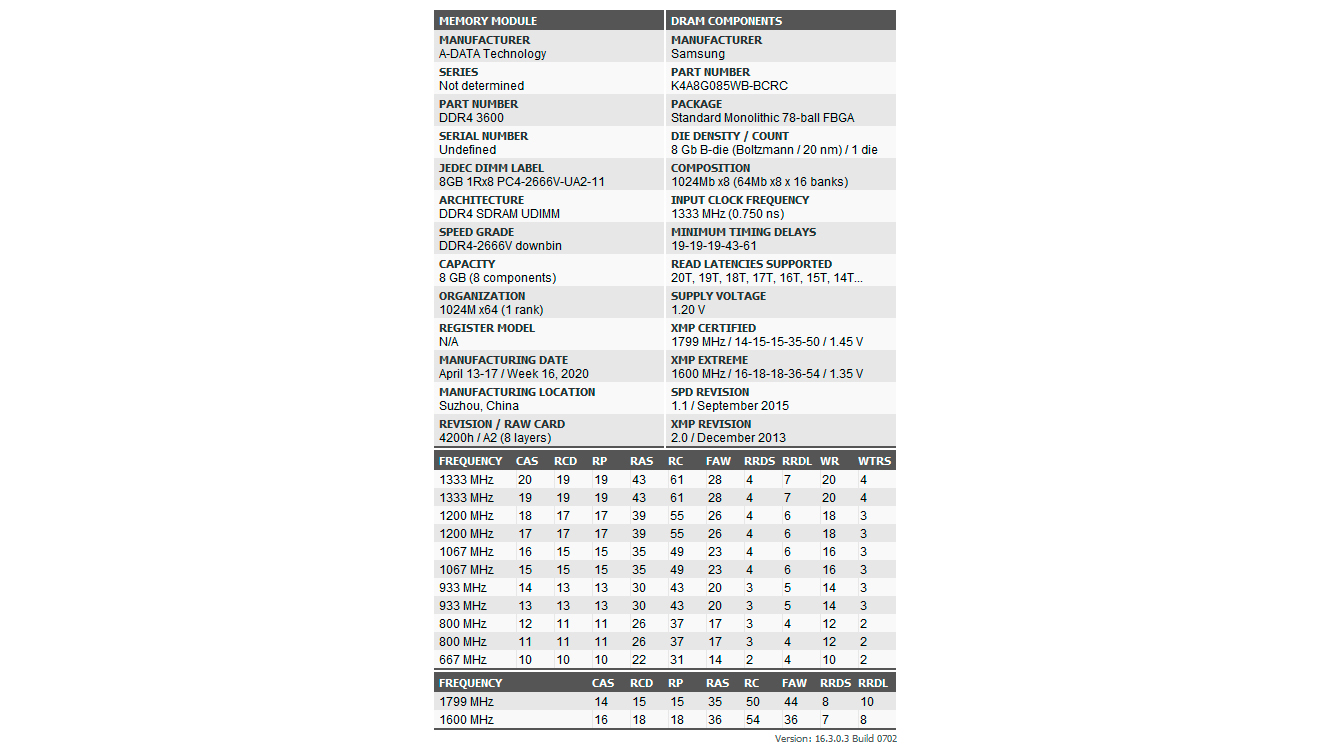Tom's Hardware Verdict
The Spectrix D60G performs just as good as any other high-peformance DDR4-3600 C14 memory kit and carries a very competitive price tag.
Pros
- +
Eye catching RGB lighting
- +
Great gaming performance
- +
Headroom for overclocking
Cons
- -
Subpar AMD performance
Why you can trust Tom's Hardware
The Spectrix D60G is Adata's way of getting back on the radar of enthusiasts. Despite having just debuted a little over a year ago, the series has come a long way and now vies for a spot on our list of Best RAM. Adata did a pretty good job of expanding the initial Spectrix D60G lineup to appease different types of users. Whether you're a content creator who aims for high capacity or an enthusiast that strives for performance, Adata's Spectrix D60G portfolio should have a memory kit to fit your specific needs.
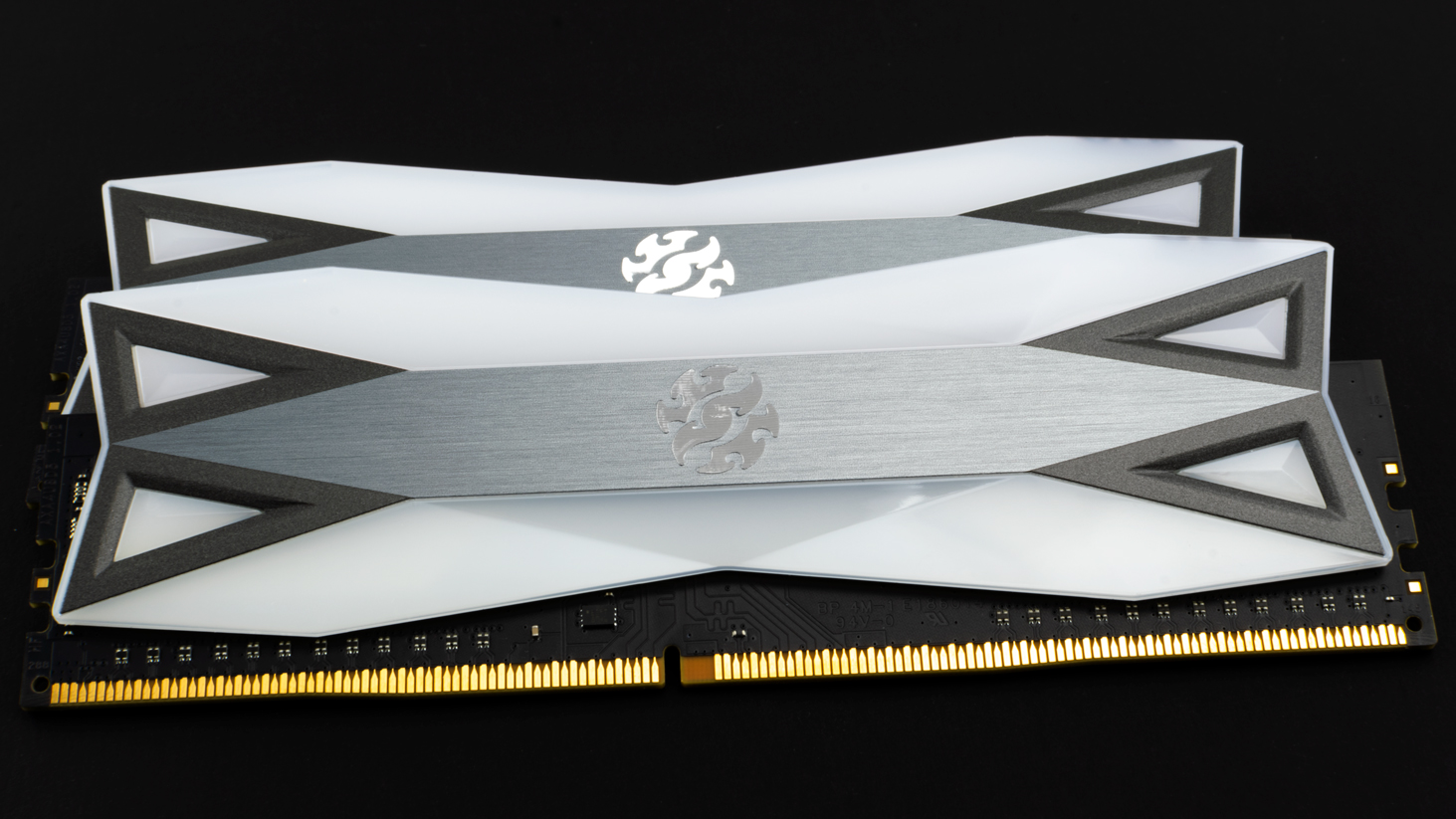
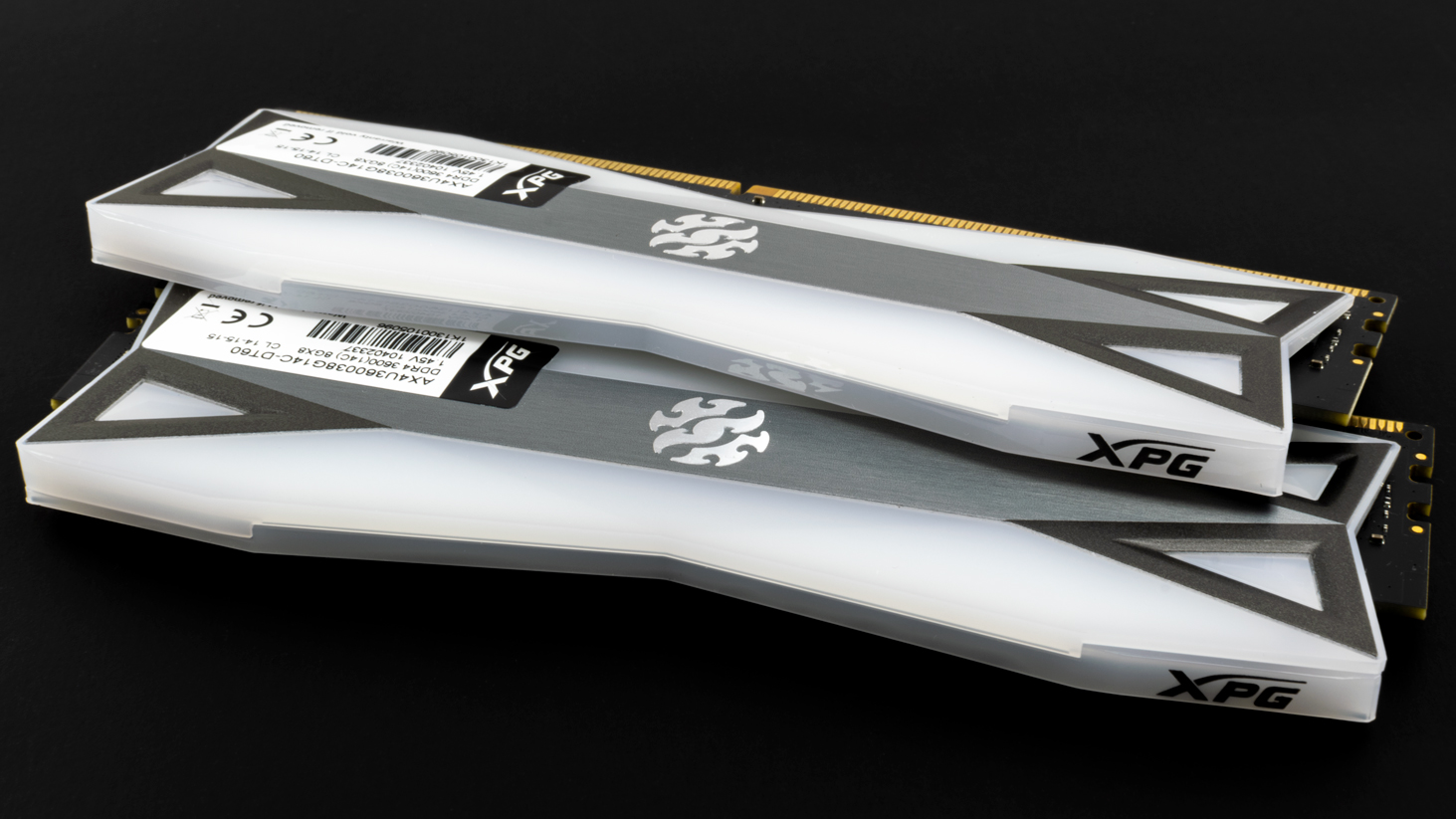
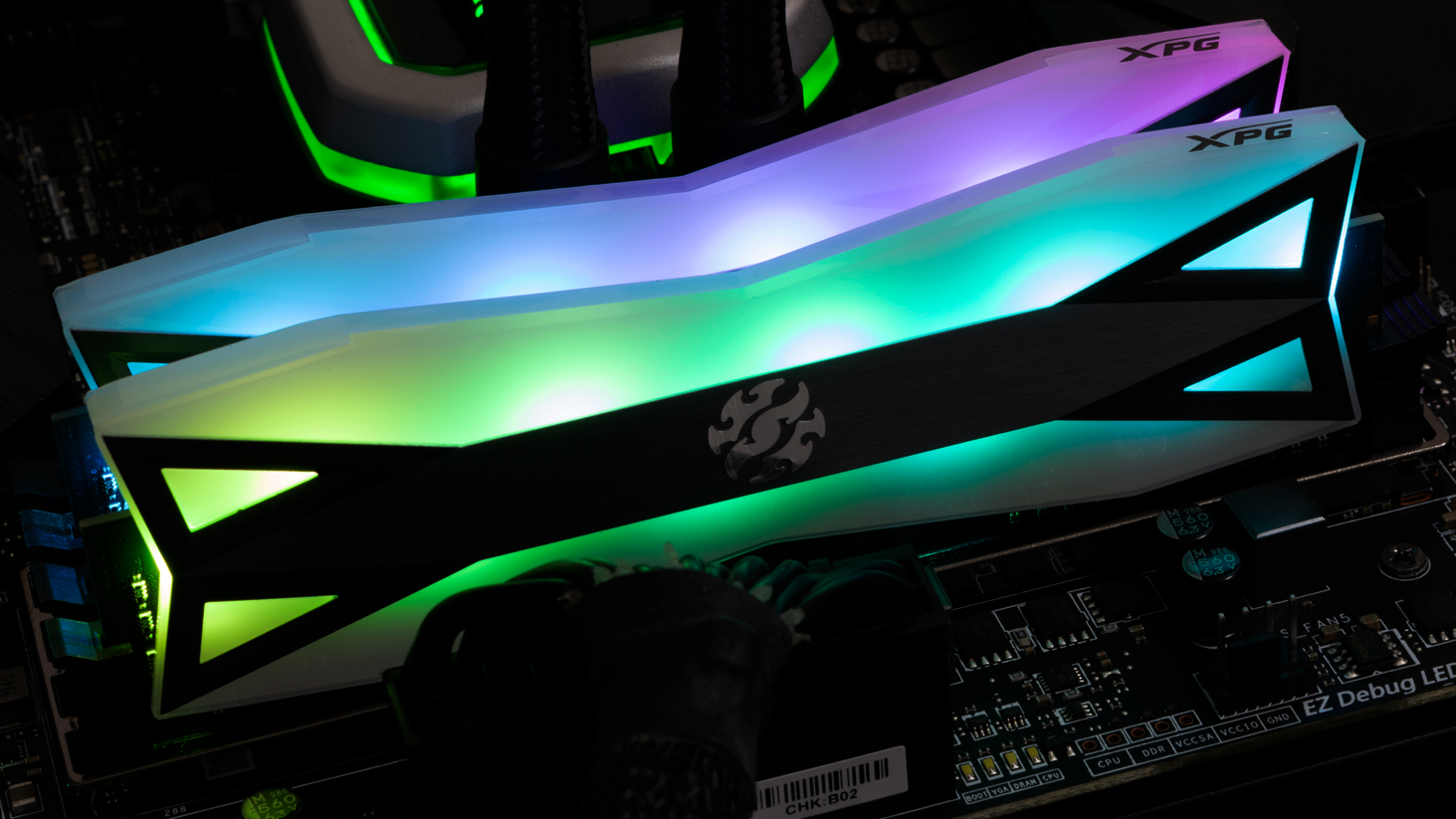
The Spectrix D60G has one of those designs that you'll either love or hate. The memory modules have a multifaceted exterior, drawing inspiration from diamonds. The RGB LED diffuser practically serves as the entire heat spreader -- not that plastic does a great job of dissipating heat, but most RAM kits don't generate enough heat to need a heat spreader anyway. Adata brags that over 60% of the surface area flaunts RGB lighting, which is probably how the Spectrix D60G got its name.
If the RGB lighting itself isn't enough to draw you in, an aluminum strip brandishing the XPG logo serves as a bit of extra eye candy. With a height of 46mm (1.81 inches), the memory modules shouldn't cause any compatibility problems with large CPU coolers. The lighting is customizable through Adata's XPG RGB Sync App software, or you can use your motherboard's software. The Spectrix D60G is compatible with ASRock Polychrome Sync, Asus Aura Sync, Gigabyte RGB Fusion 2.0, and MSI Mystic Light Sync, so the bases are covered there.
The Spectrix D60G 16GB memory kit packs two single-rank 8GB memory modules built with a black, eight-layer PCB, carrying Samsung B-die ICs with the K4A8G085WB-BCRC part number.
The memory modules default to DDR4-2666 and 19-19-19-43 timings. Fear not, though, as Adata has programmed two XMP profiles into the Spectrix D60G. The primary profile enables the memory to operate at DDR4-3600 with 14-15-15-35 timings and a voltage of 1.45V. The secondary profile runs at DDR4-3200 with the timings set to 16-18-18-36. This profile dials the voltage down to 1.35V. For more on timings and frequency considerations, see our PC Memory 101 feature, as well as our How to Shop for RAM feature.
Comparison Hardware
| Memory Kit | Part Number | Capacity | Data Rate | Primary Timings | Voltage | Warranty |
|---|---|---|---|---|---|---|
| G.Skill Trident Z Neo | F4-3600C14D-16GTZNB | 2 x 8GB | DDR4-3600 (XMP) | 14-15-15-35 (2T) | 1.45 Volts | Lifetime |
| Adata XPG Spectrix D60G | AX4U360038G14C-DT60 | 2 x 8GB | DDR4-3600 (XMP) | 14-15-15-35 (2T) | 1.45 Volts | Lifetime |
| TeamGroup T-Force Xtreem ARGB | TF10D416G3600HC14CDC01 | 2 x 8GB | DDR4-3600 (XMP) | 14-15-15-35 (2T) | 1.45 Volts | Lifetime |
| Adata XPG Spectrix D50 | AX4U360038G18A-DT50 | 2 x 8GB | DDR4-3600 (XMP) | 18-20-20-42 (2T) | 1.35 Volts | Lifetime |
| HP V8 | 7EH92AA#ABM x 2 | 2 x 8GB | DDR4-3600 (XMP) | 18-20-20-40 (2T) | 1.35 Volts | 5 Years |
| Lexar DDR4-2666 | LD4AU008G-R2666U x 2 | 2 x 8GB | DDR4-2666 | 19-19-19-43 (2T) | 1.20 Volts | Lifetime |
Our Intel test system consists of an Intel Core i7-10700K and MSI MEG Z490 Ace on the 7C71v11 firmware, while the AMD testbed is based of an AMD Ryzen 5 3600 and MSI MAG B550 Tomahawk, on the 7C91vA1 firmware. Regardless of the platform, an MSI GeForce RTX 2080 Ti Gaming Trio handles the graphical duties.
Intel Performance
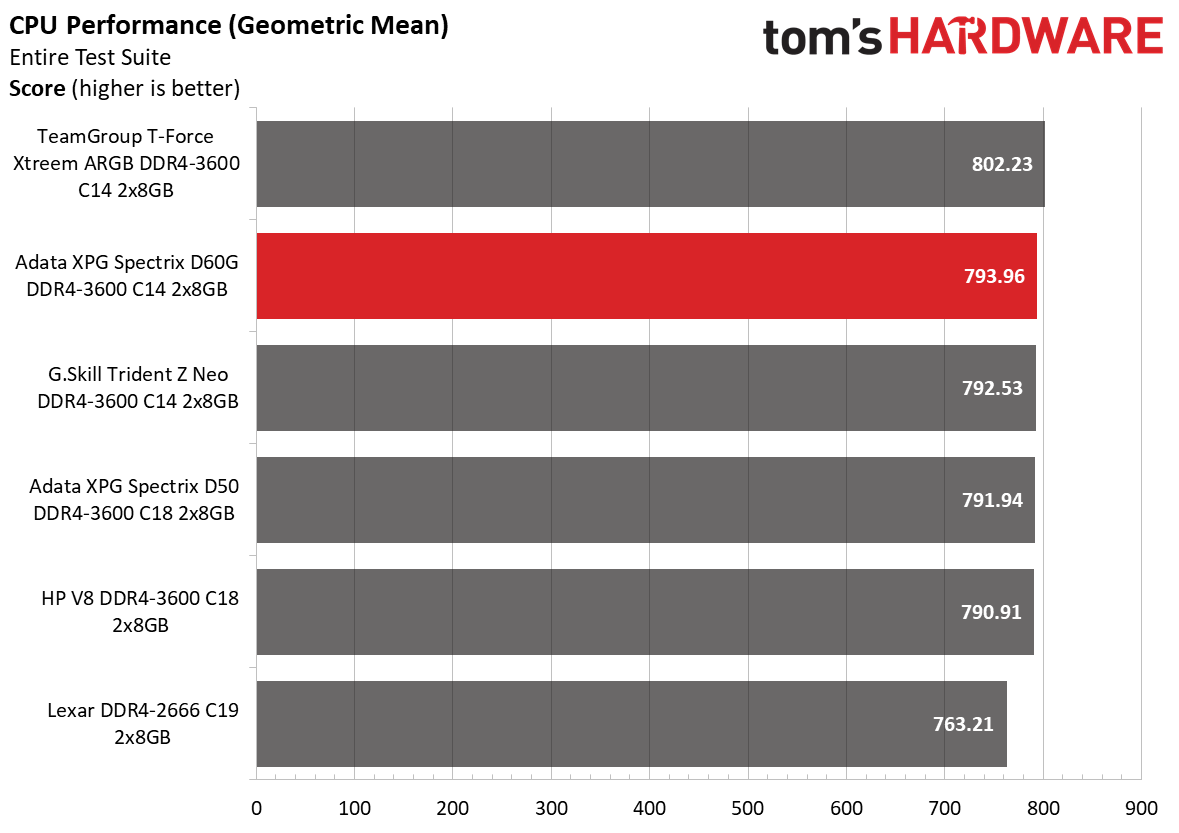
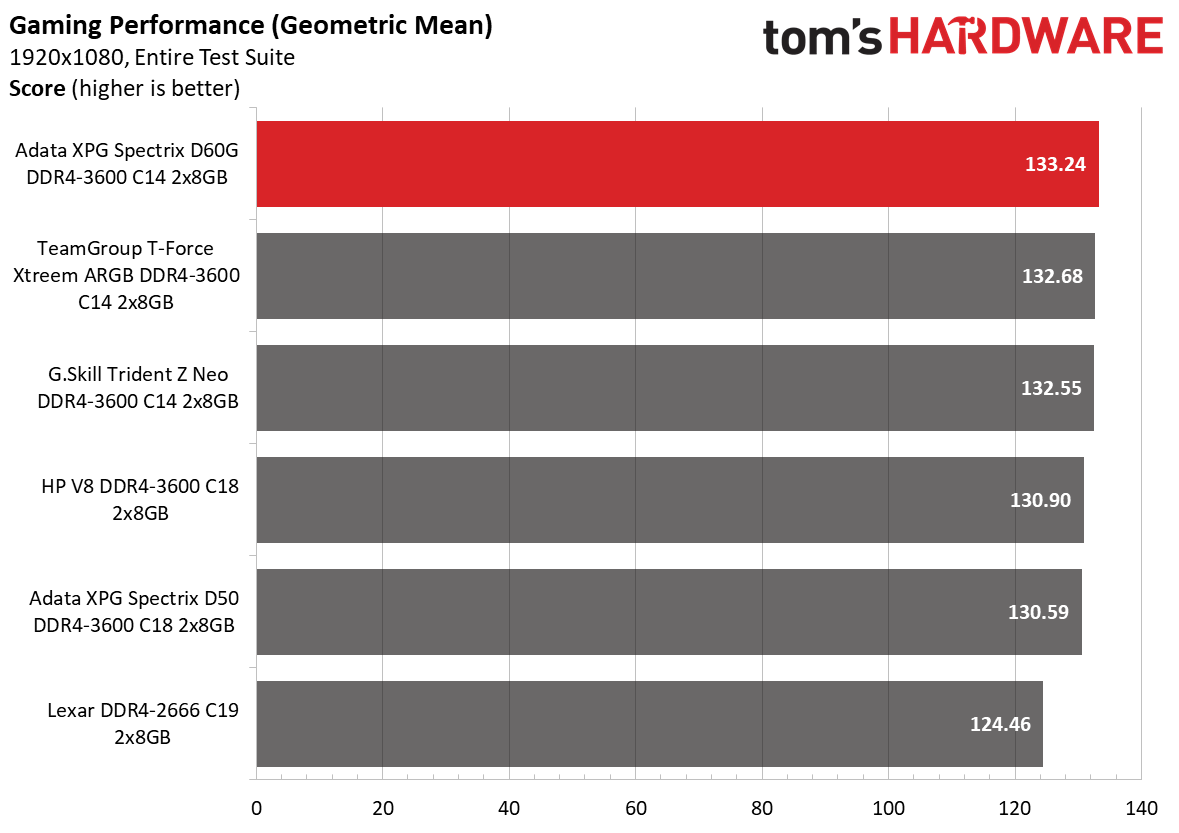
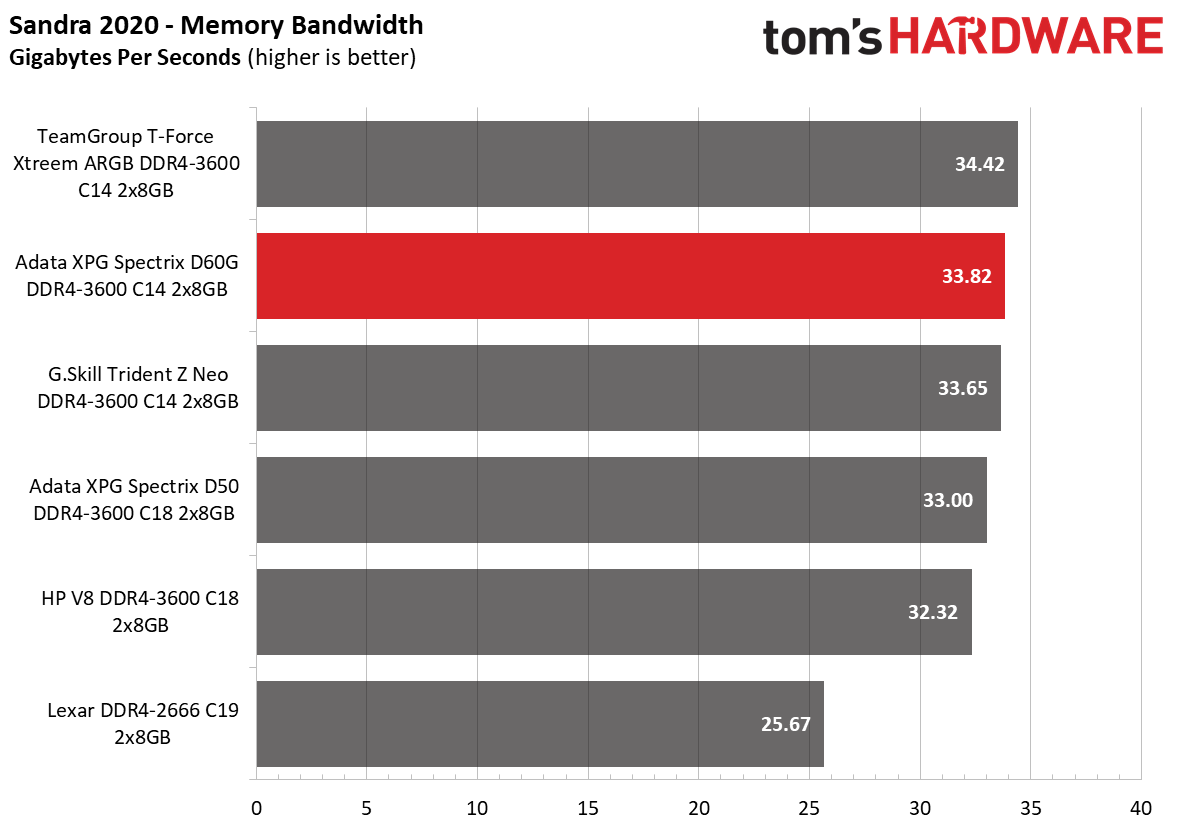
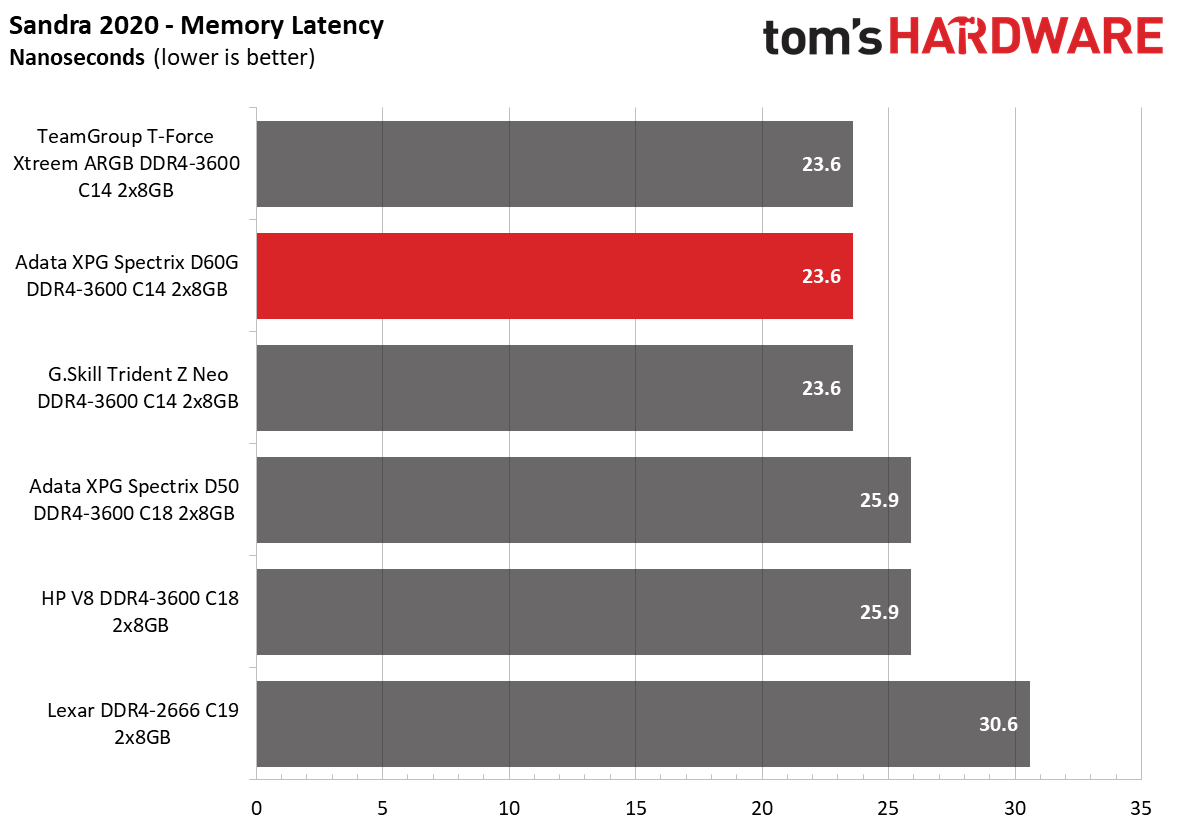
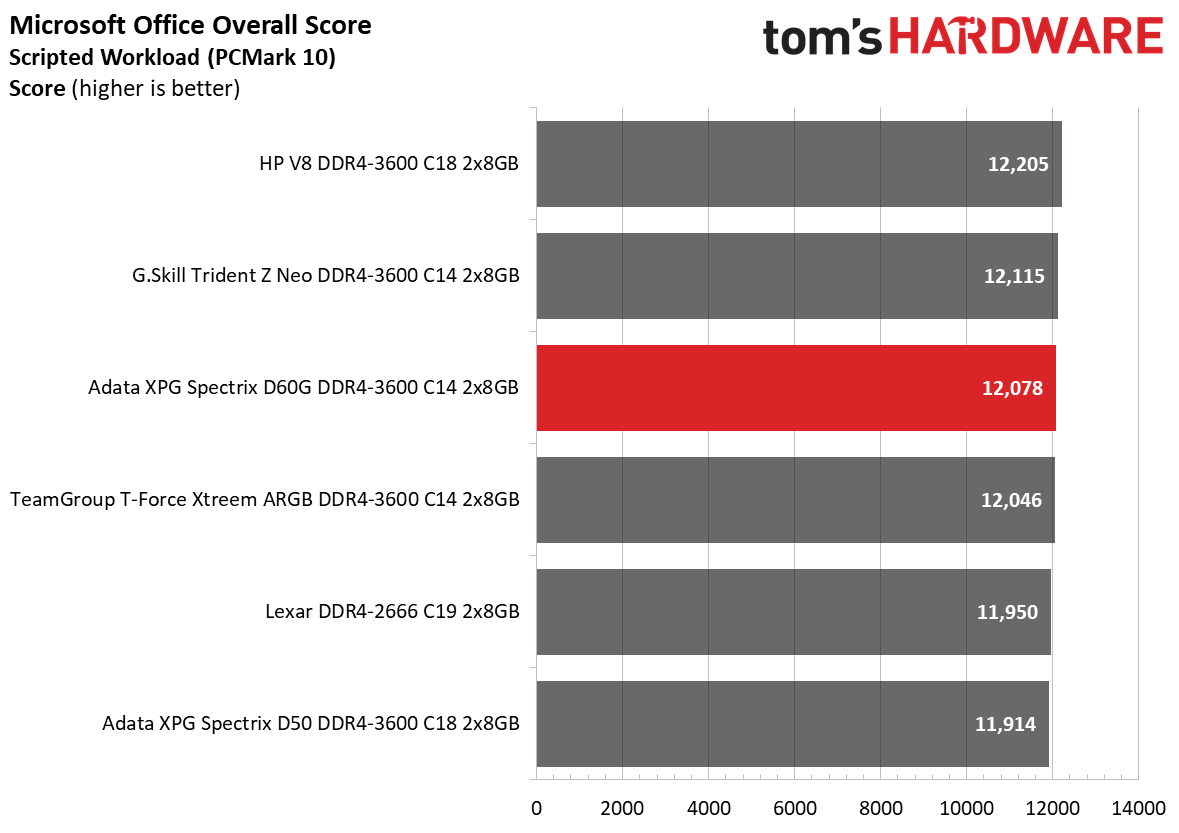
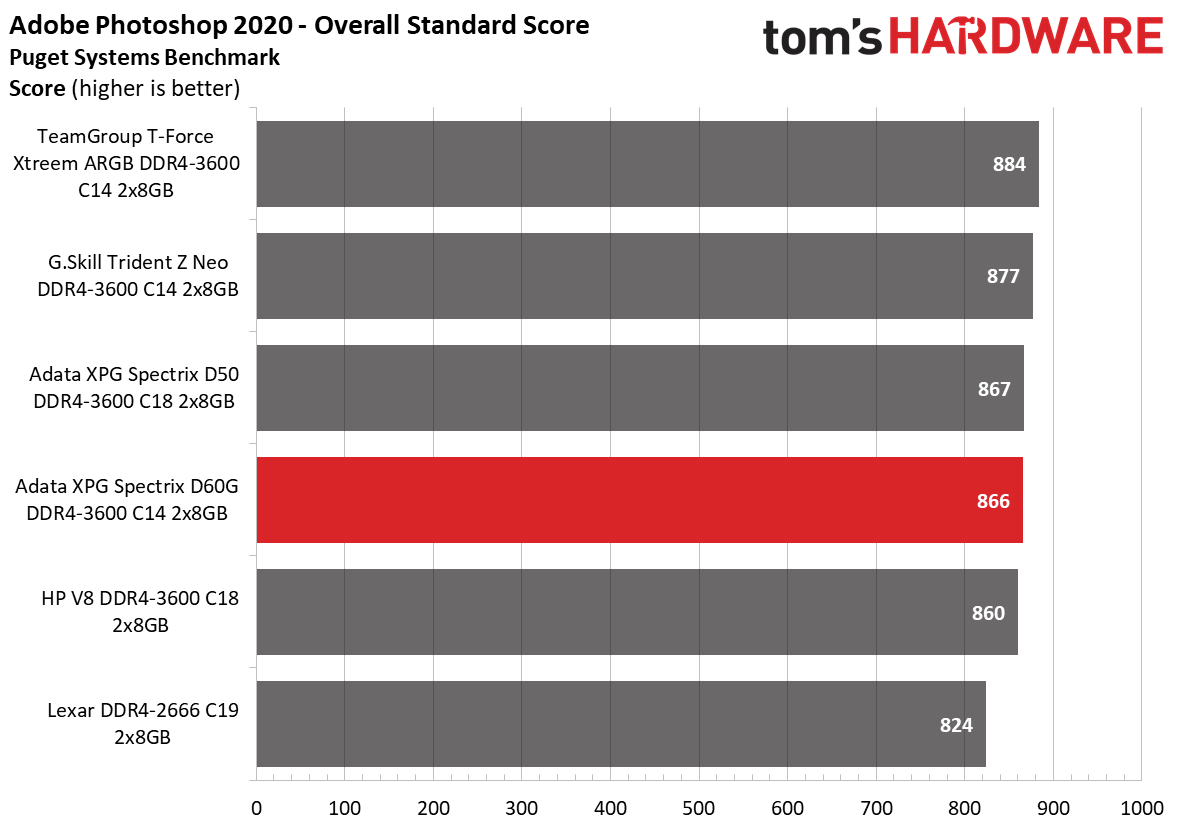
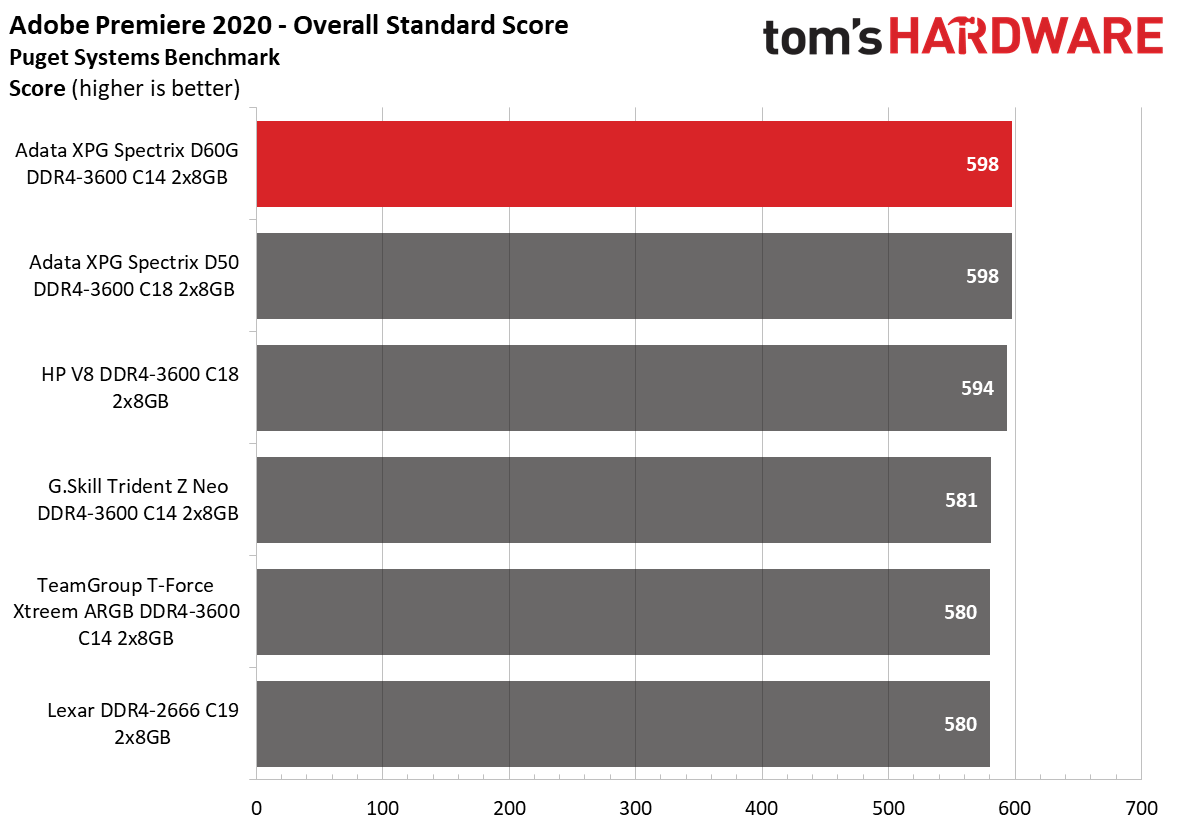
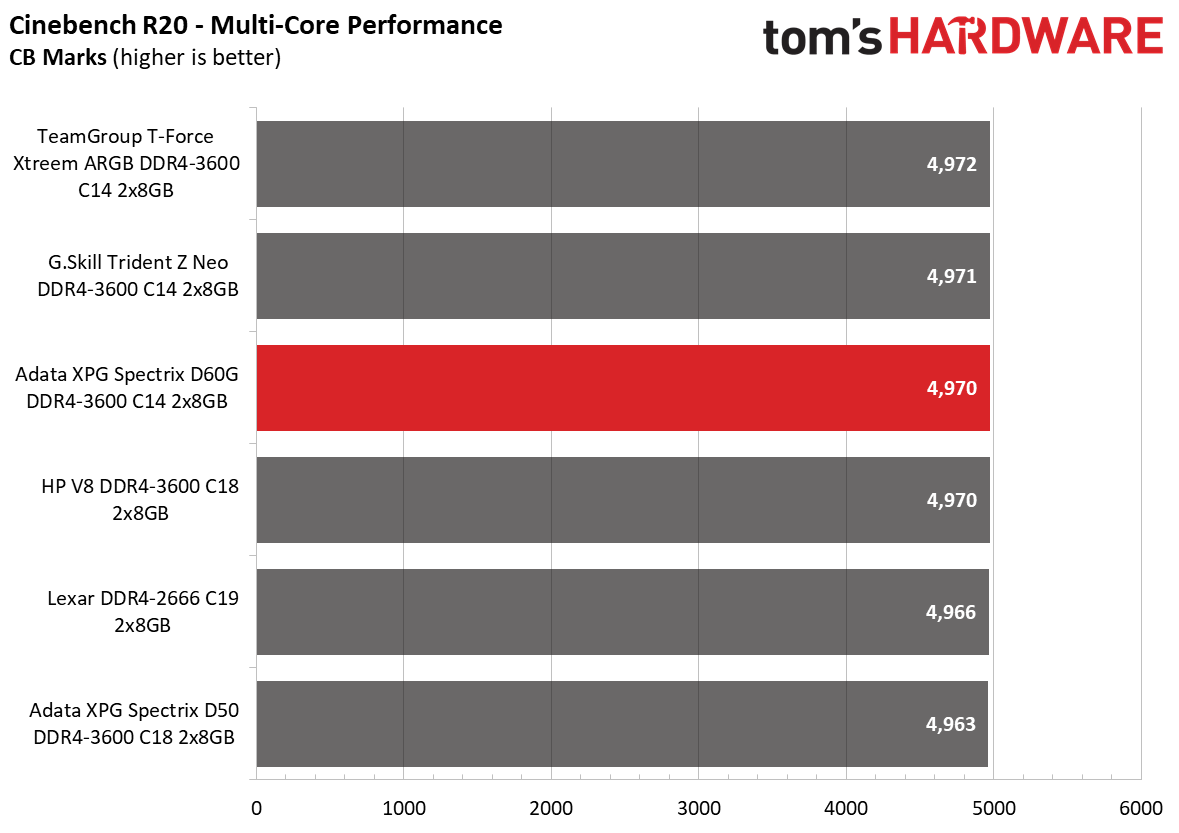
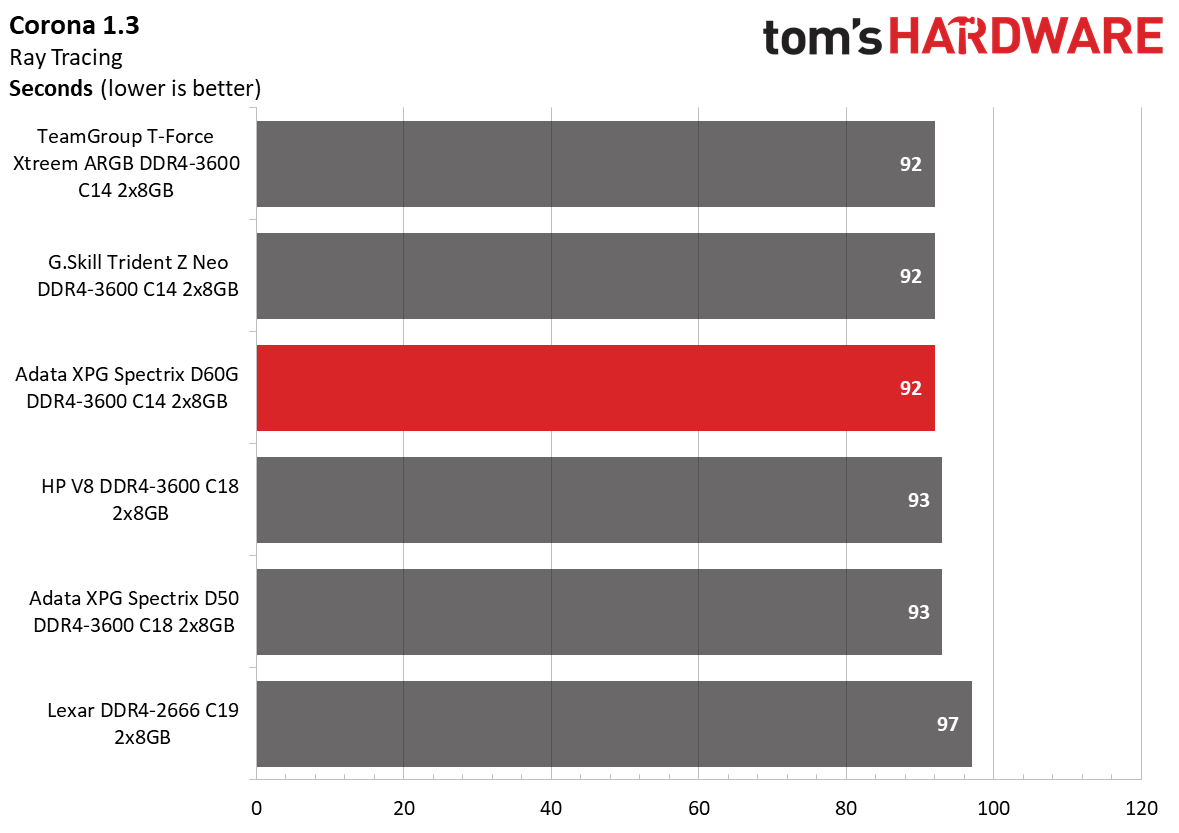
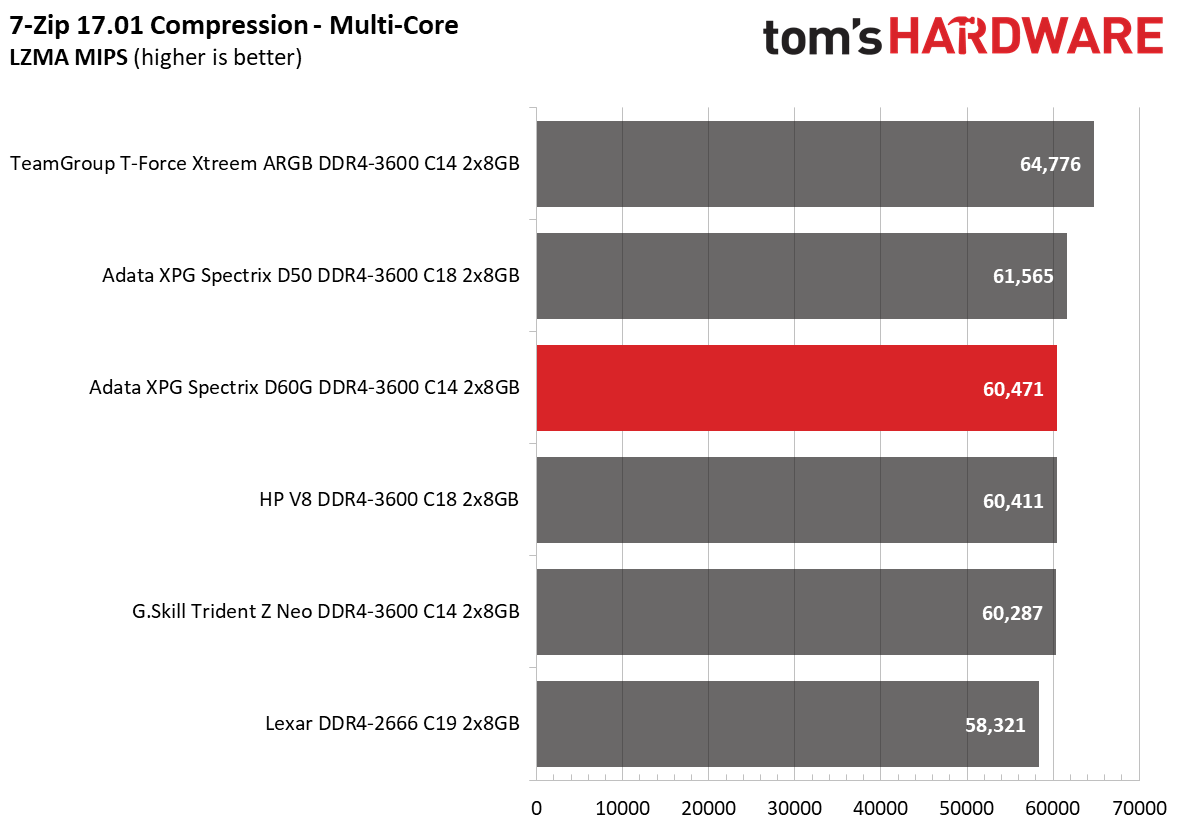
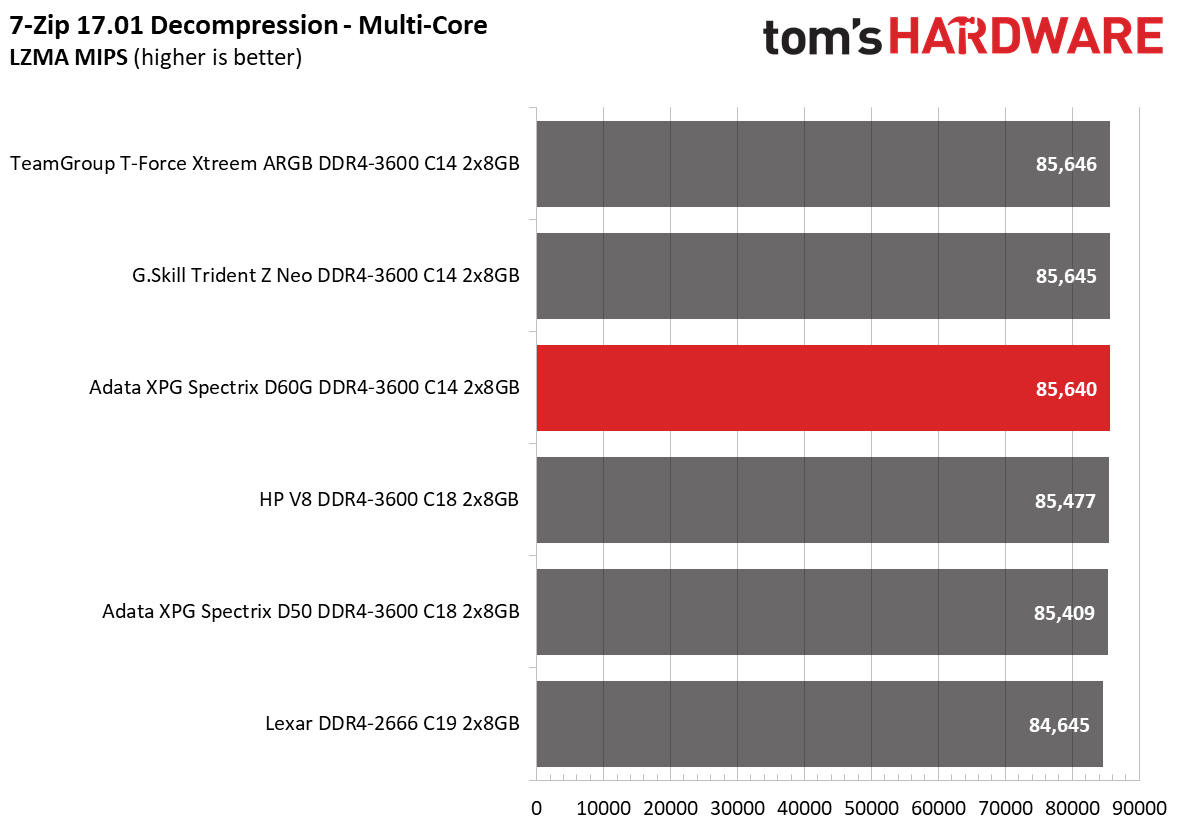
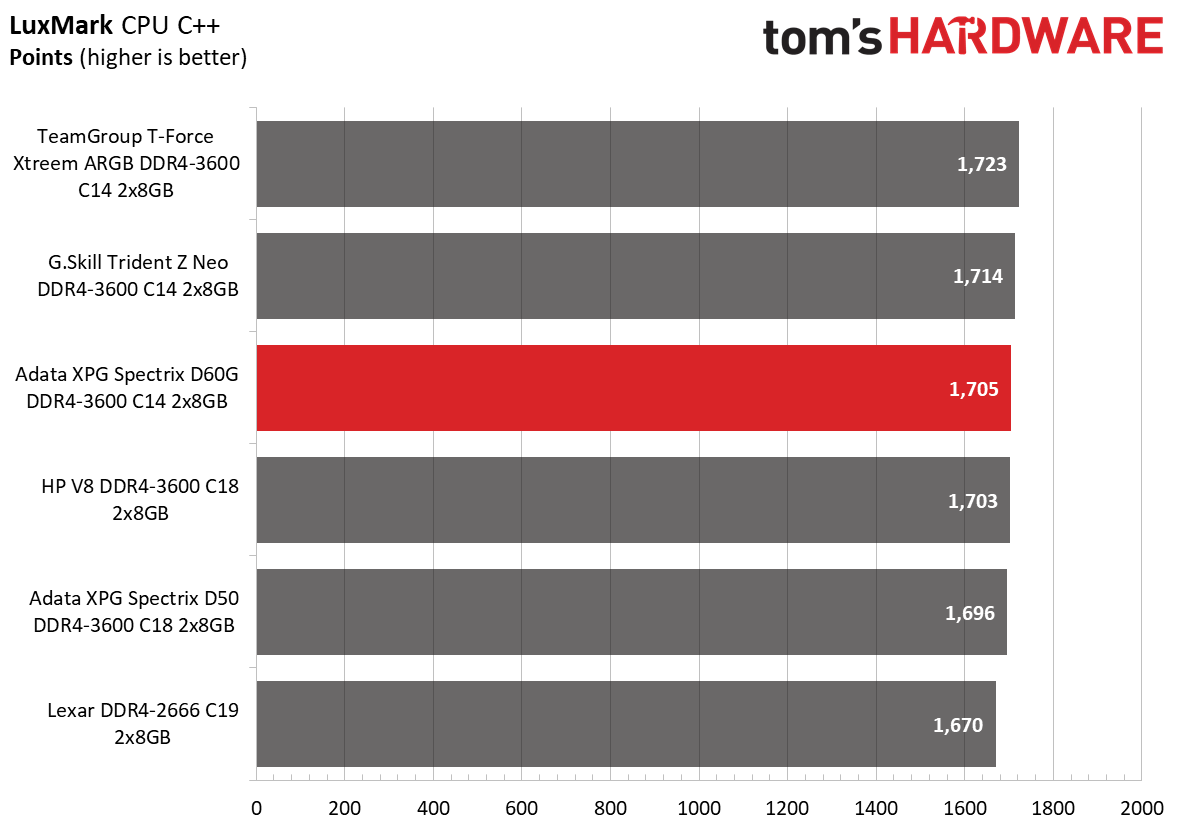
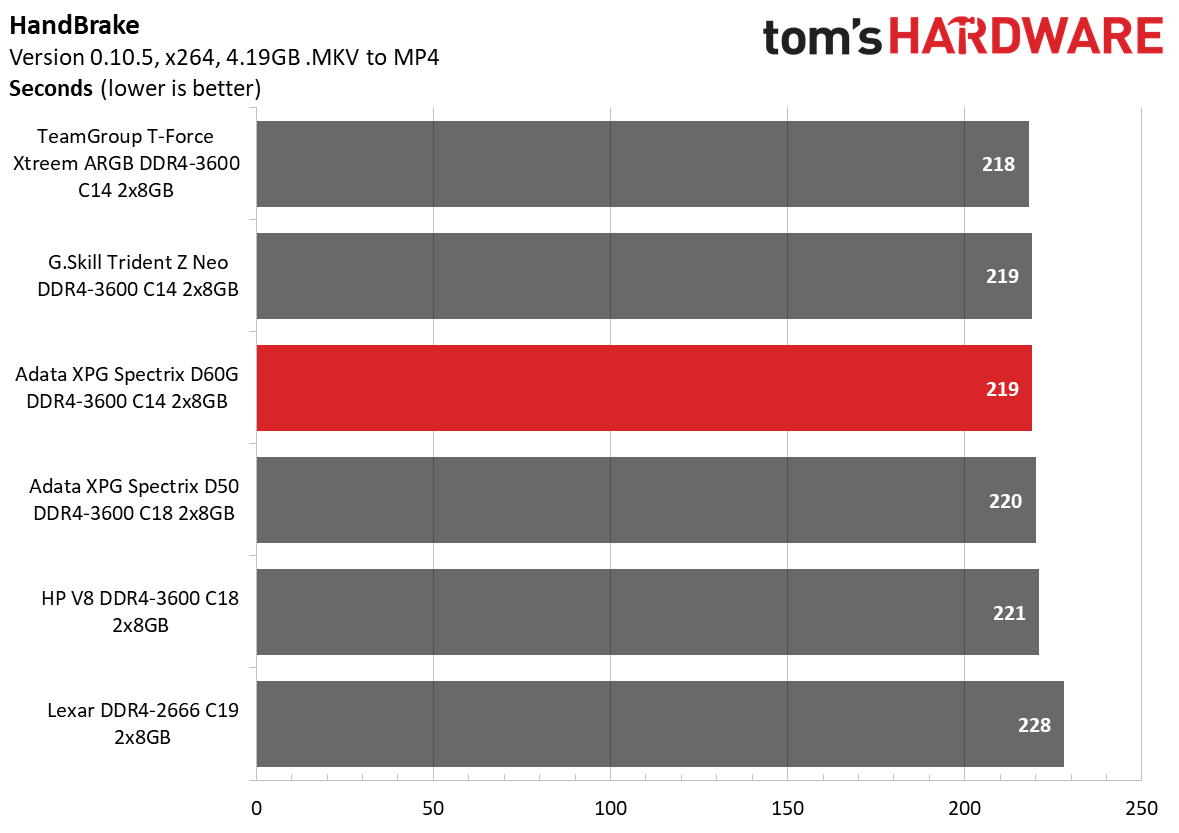
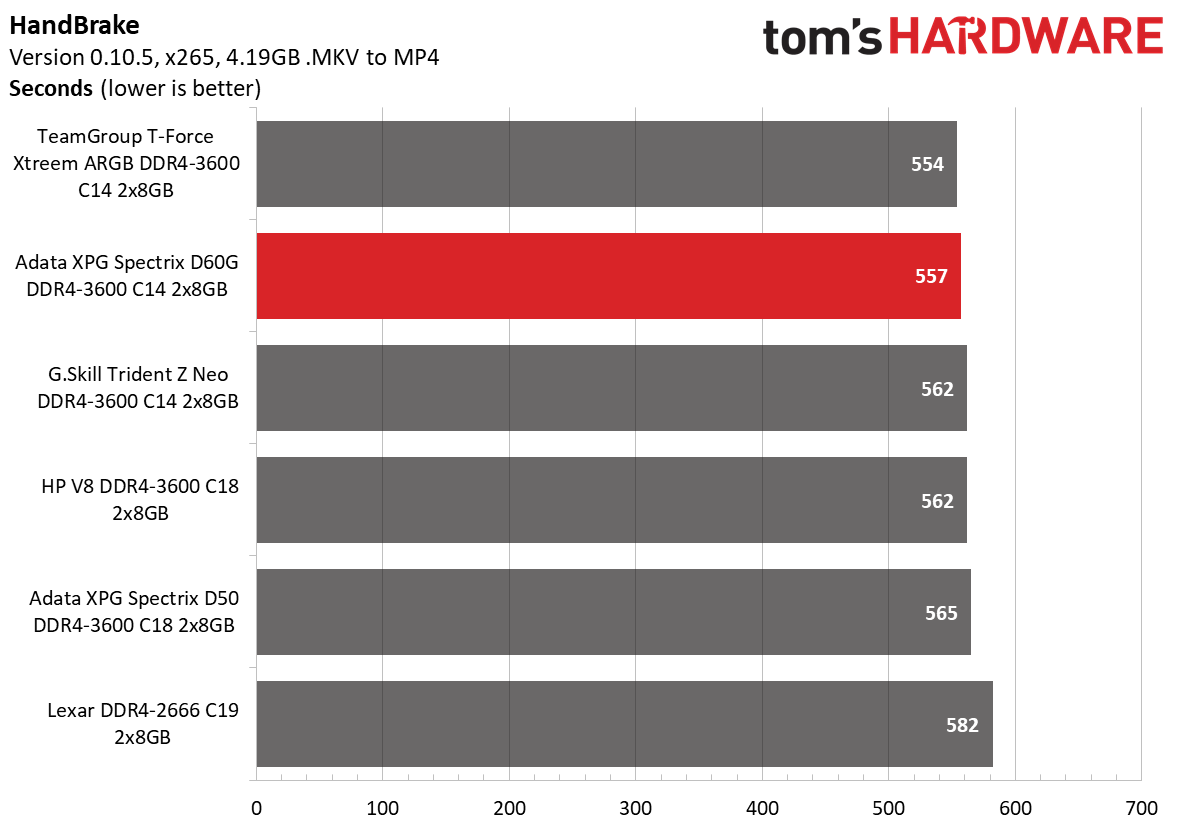
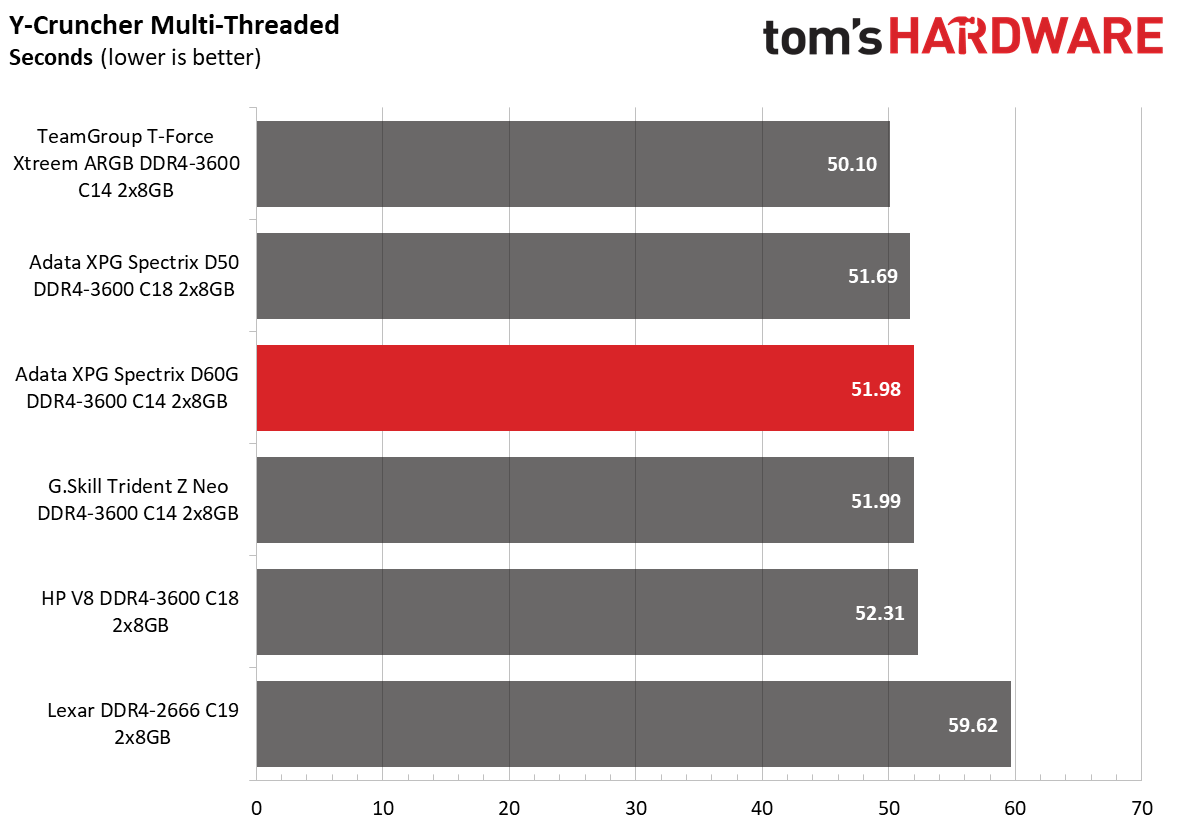
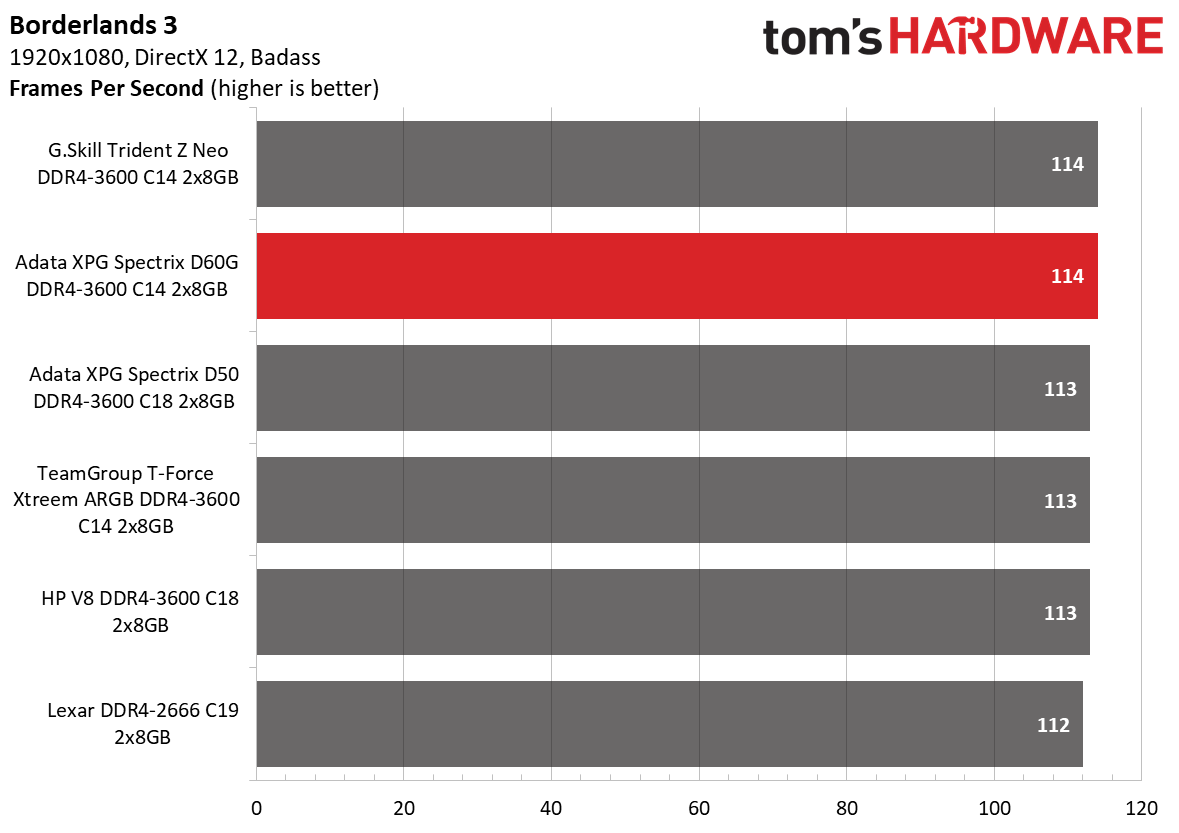
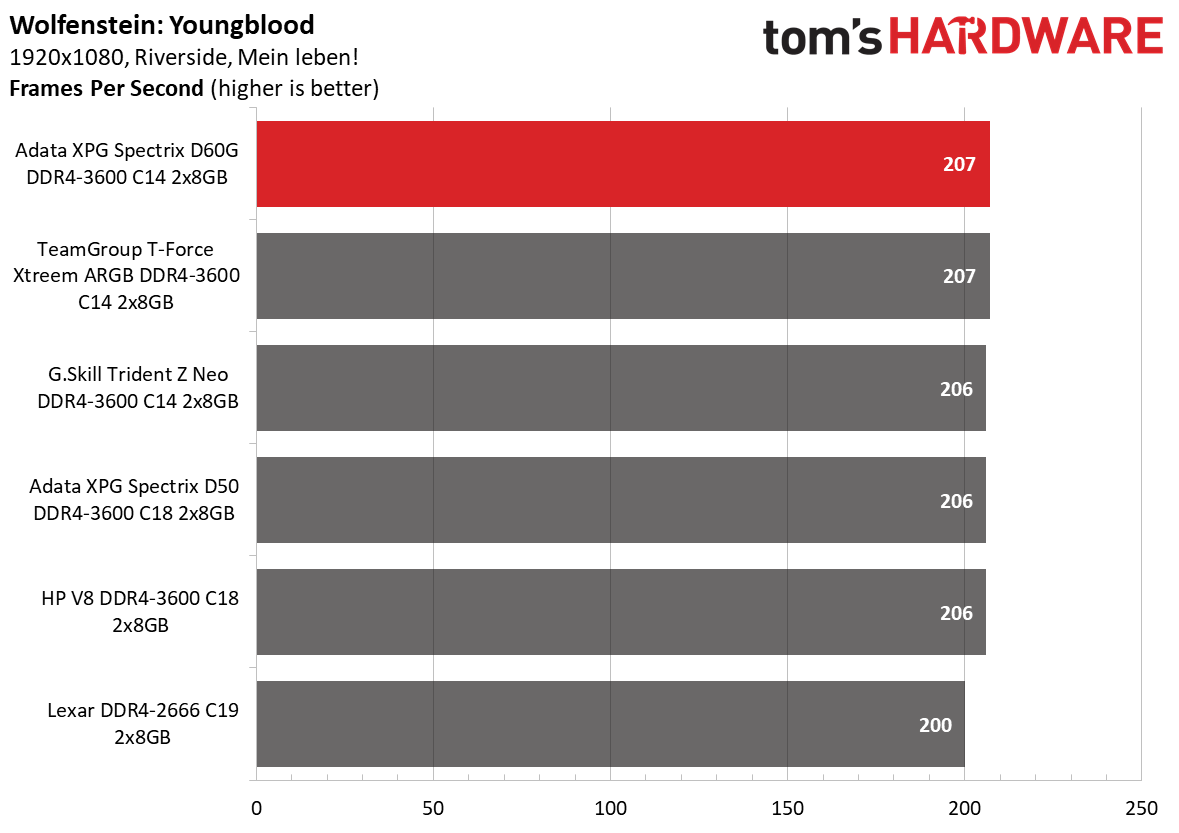
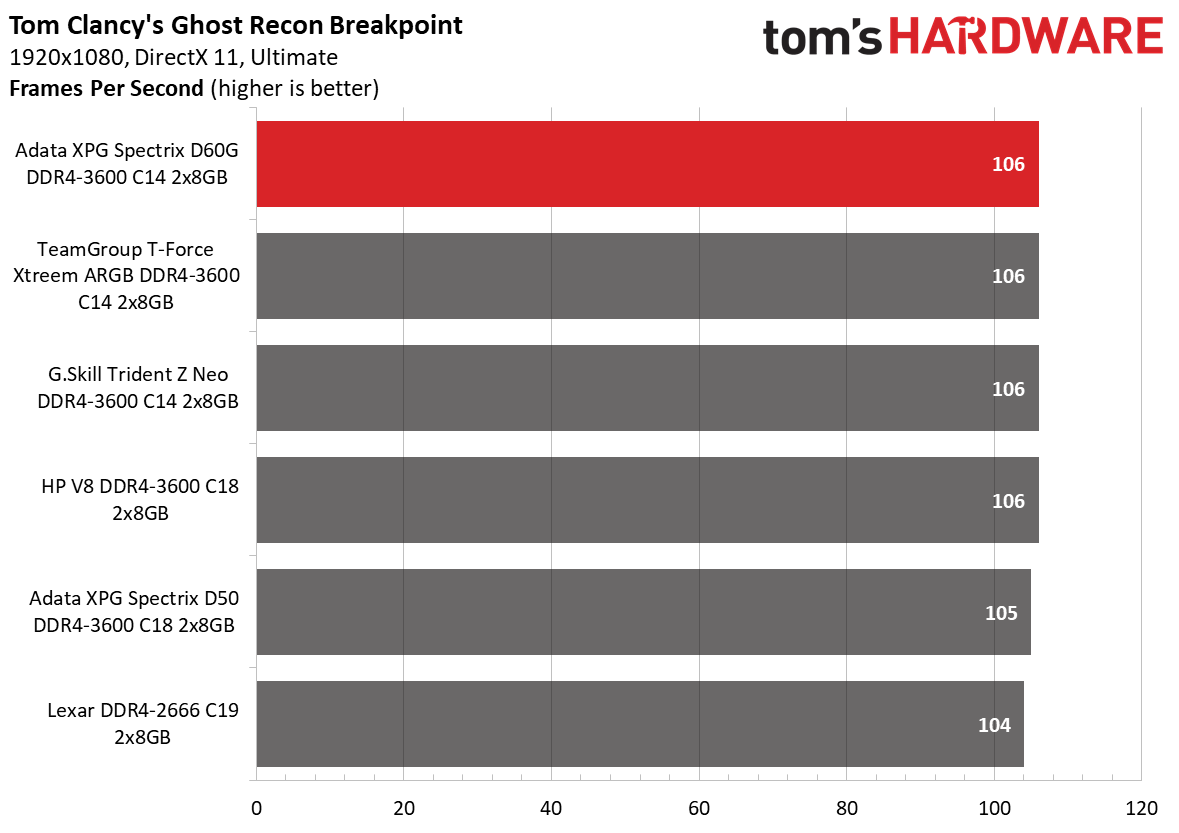
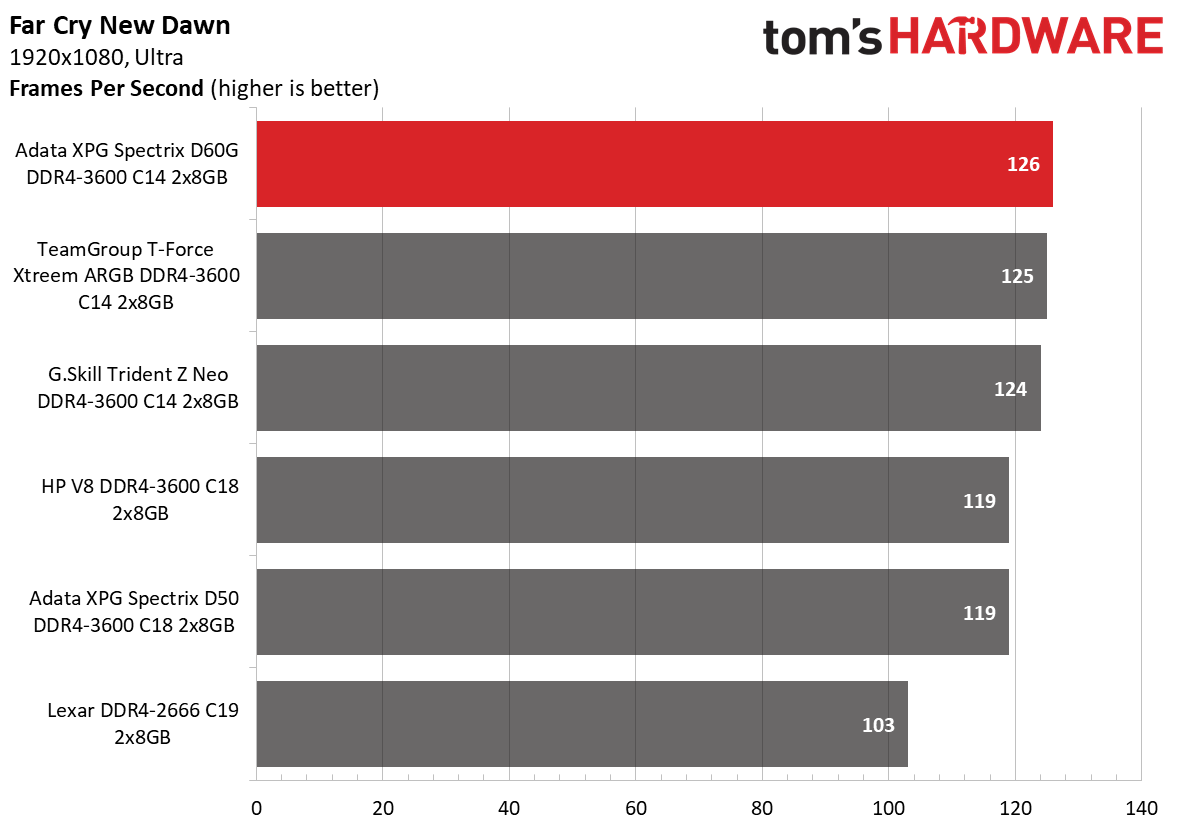
The Spectrix D60G DDR4-3600 C14 memory kit largely ranked in the top three positions in the majority of our RAM benchmarks, but it dropped to fourth place behind the slower Spectrix D50 DDR4-3600 C18 memory kit in the Photoshop test. Overall, Spectrix D60G finished in first and second place on the CPU and gaming benchmarks.
Get Tom's Hardware's best news and in-depth reviews, straight to your inbox.
AMD Performance
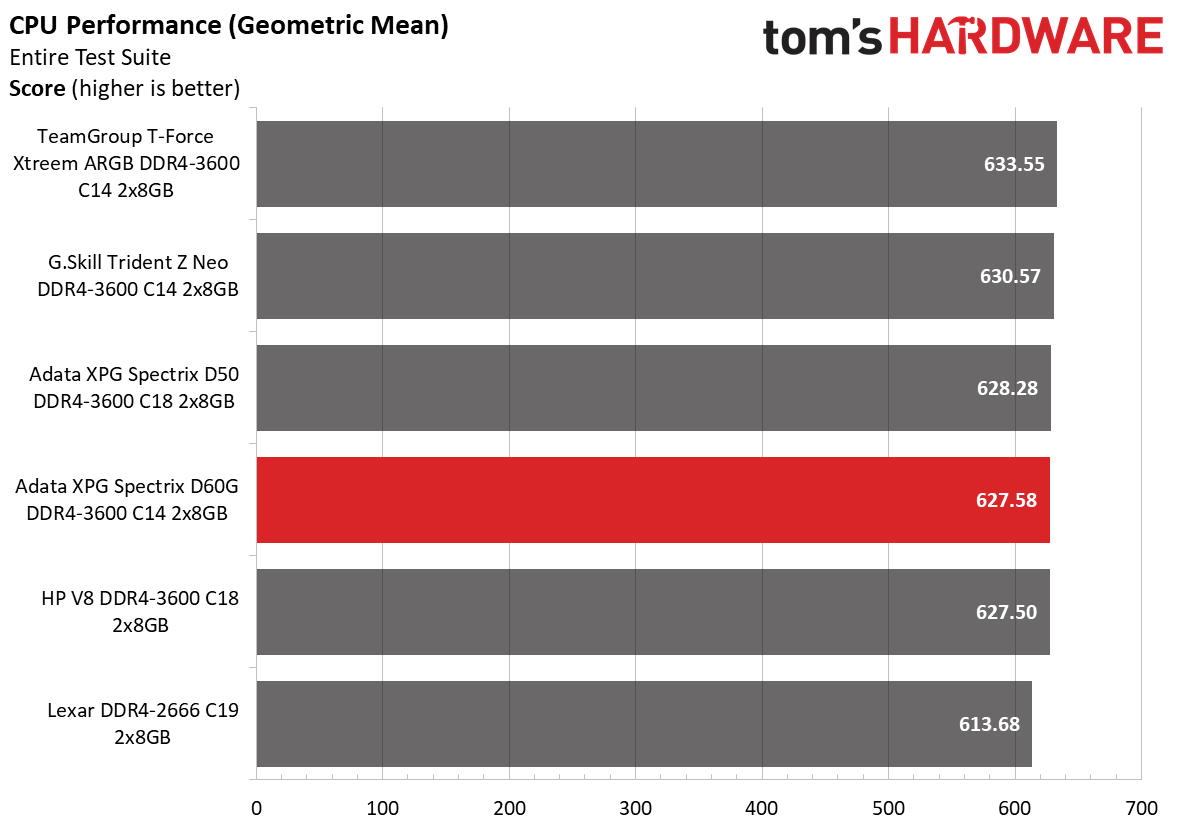
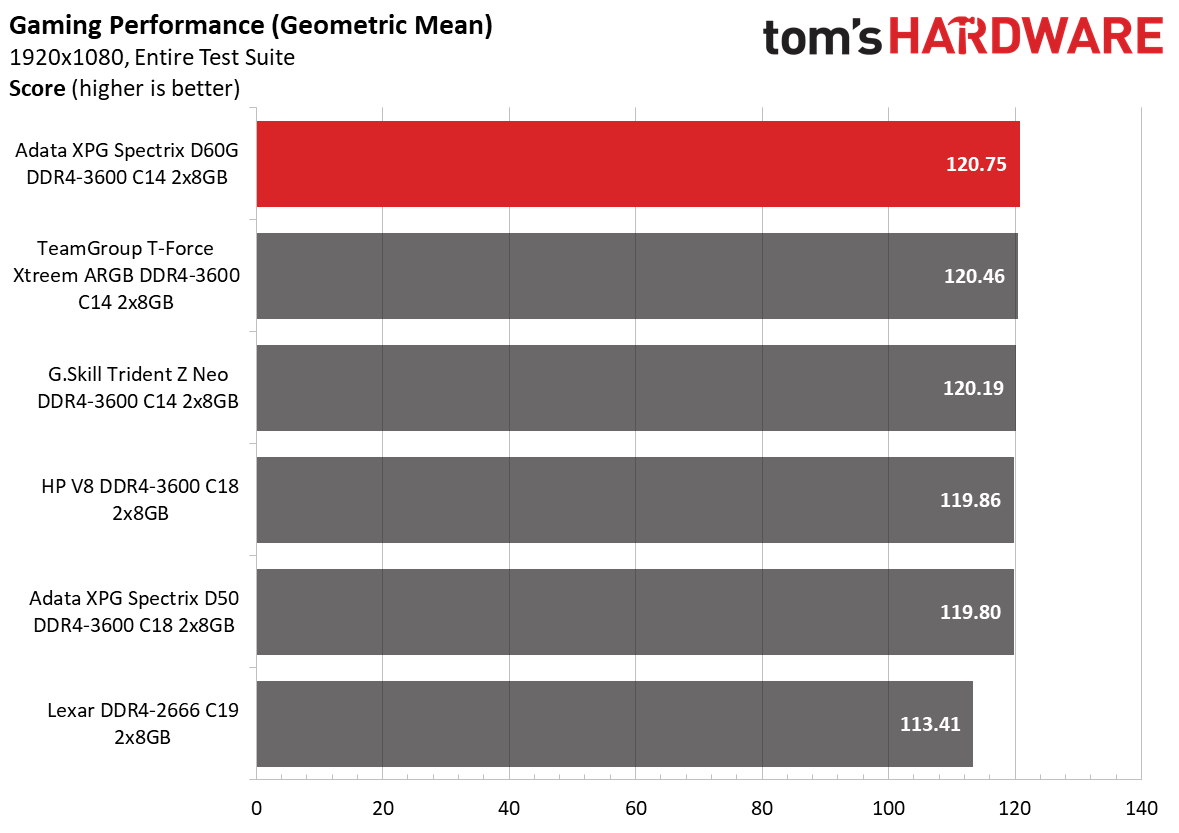
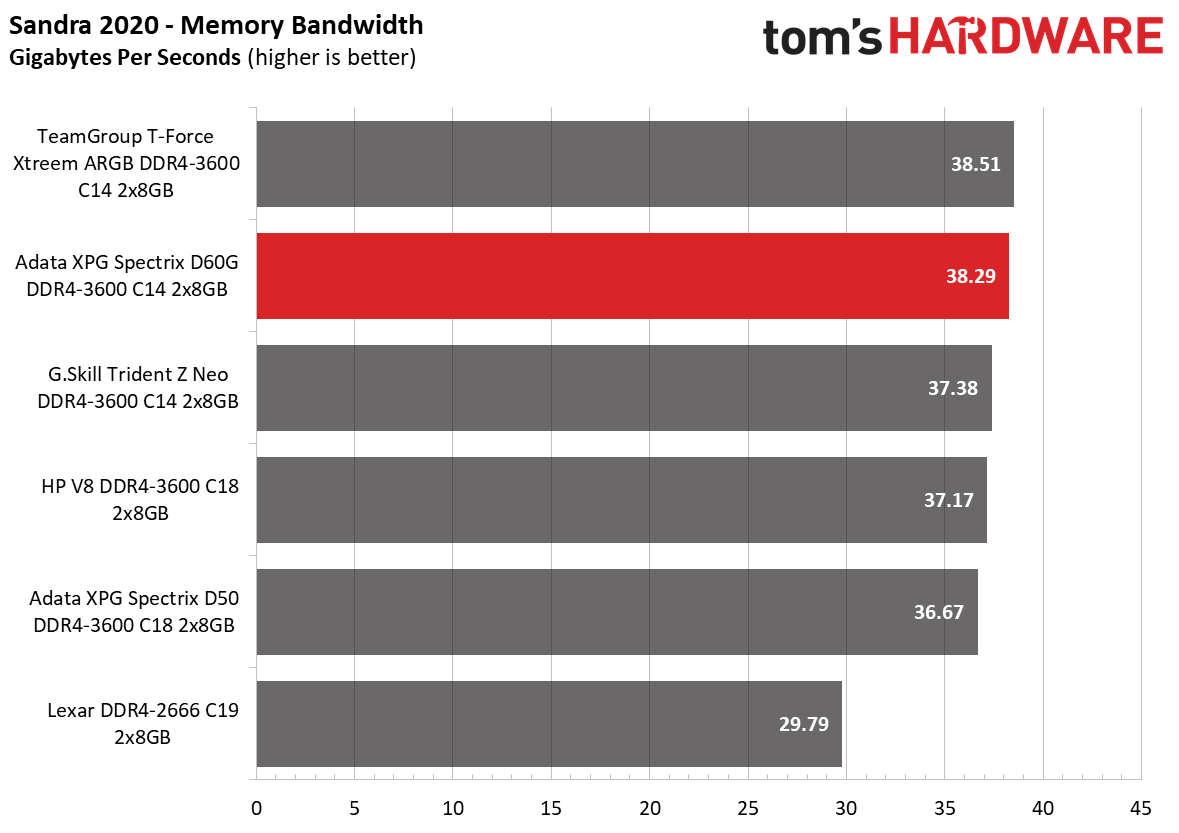
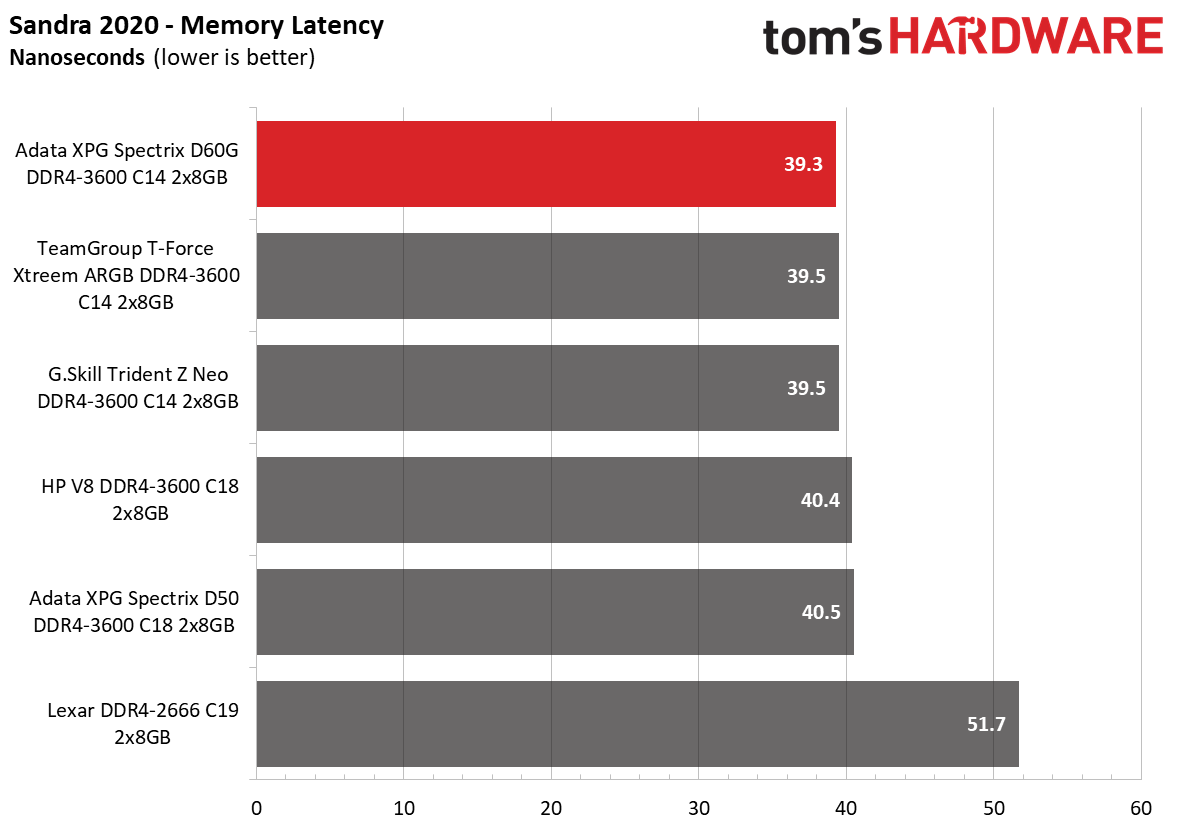
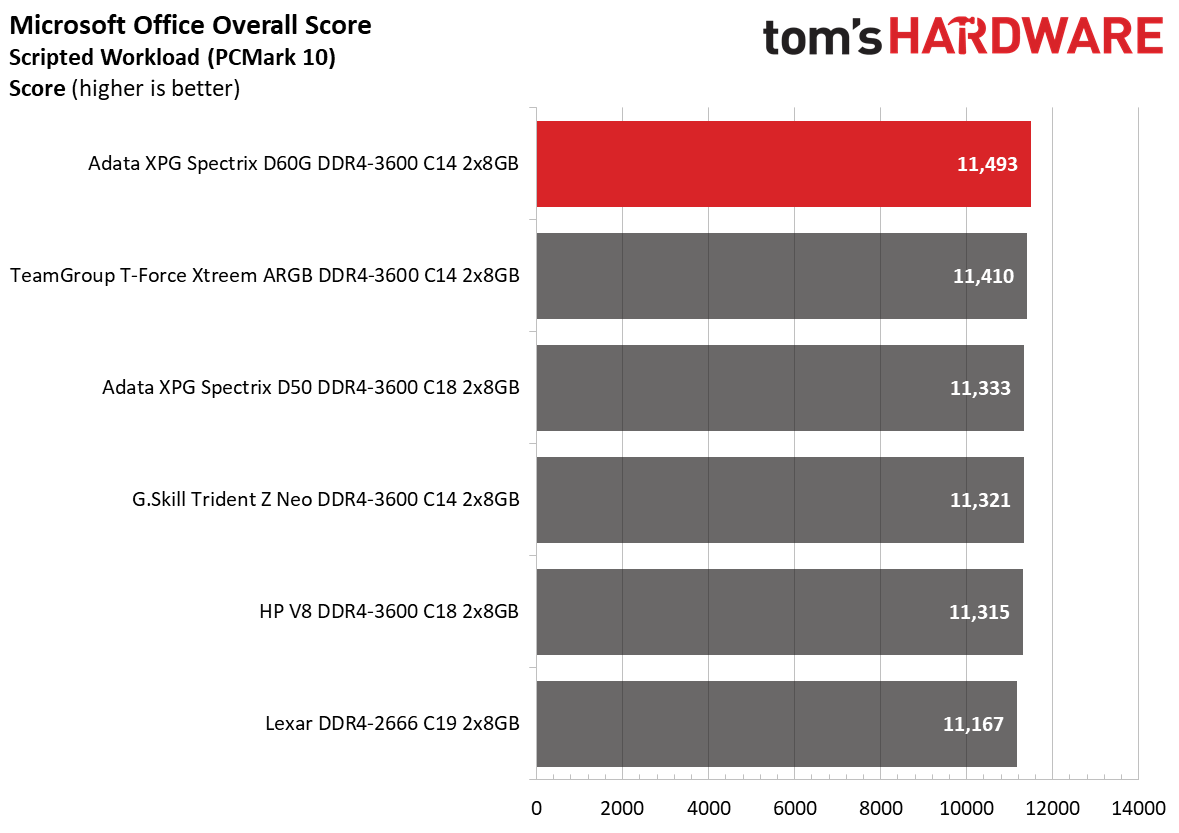
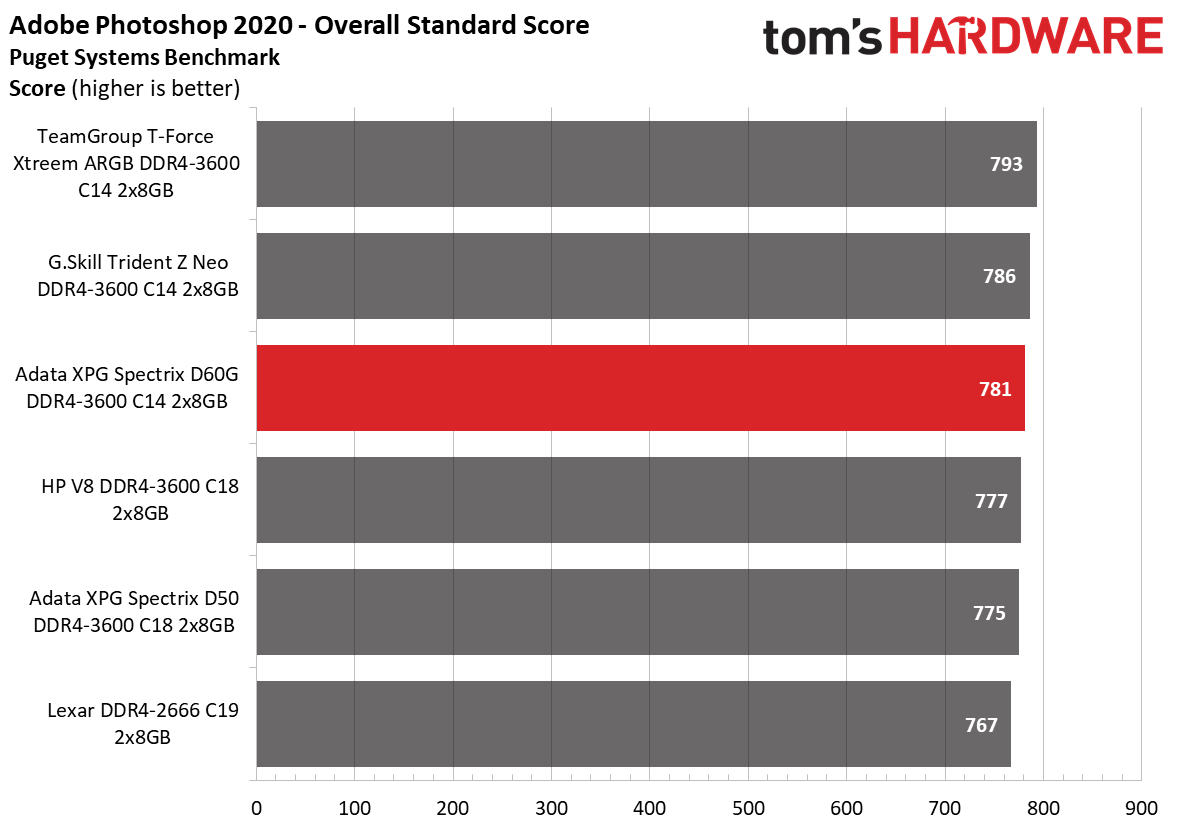
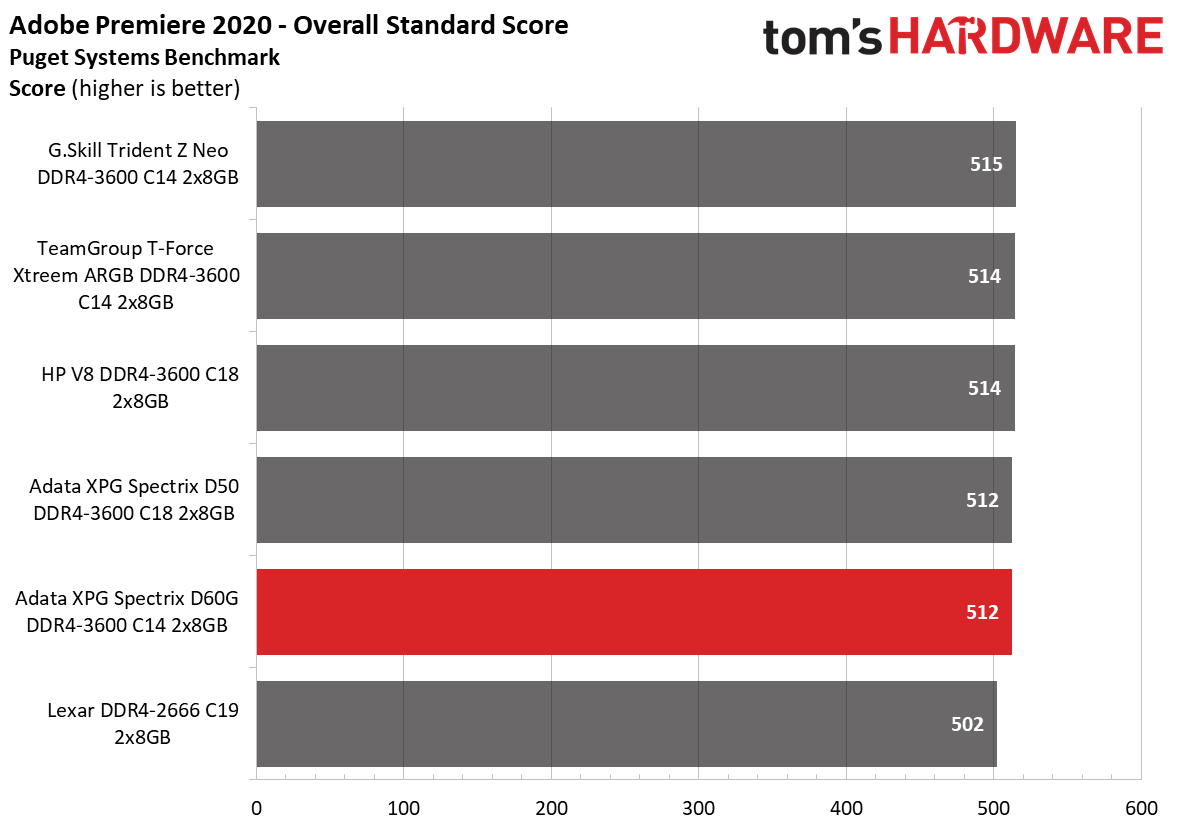
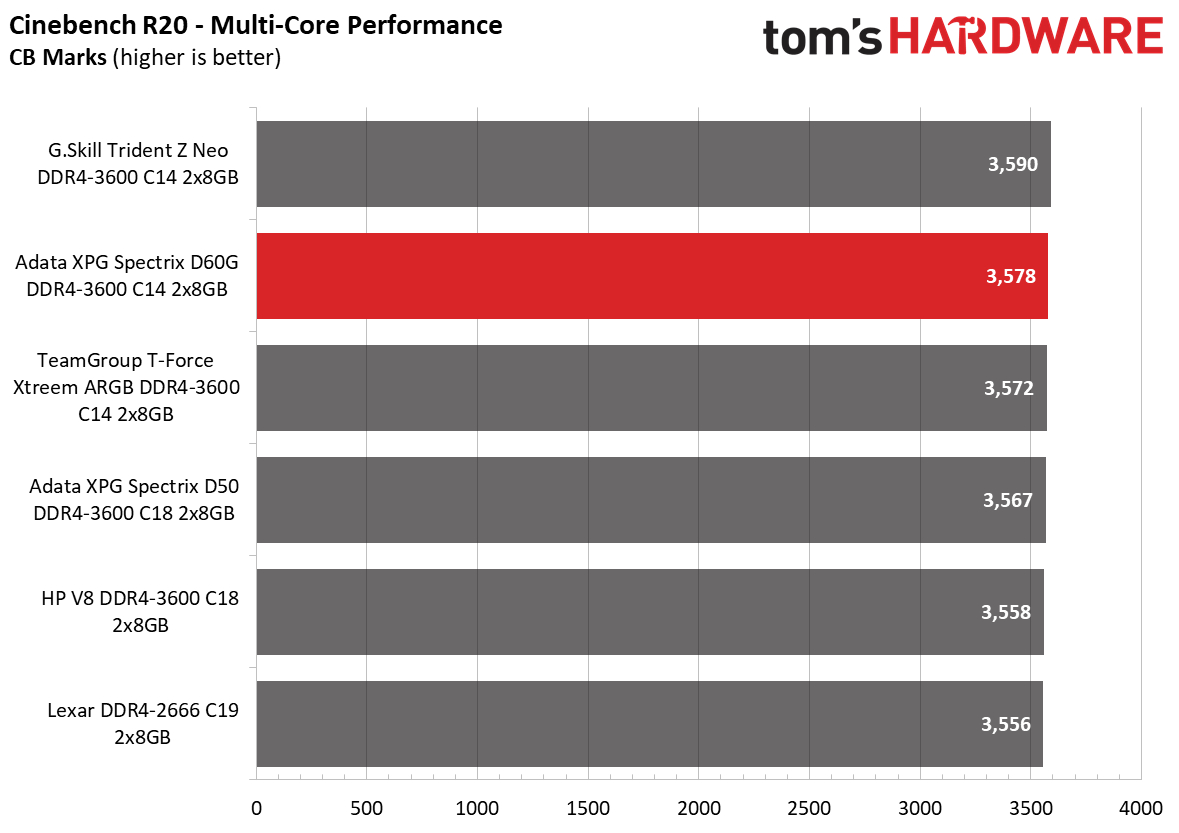
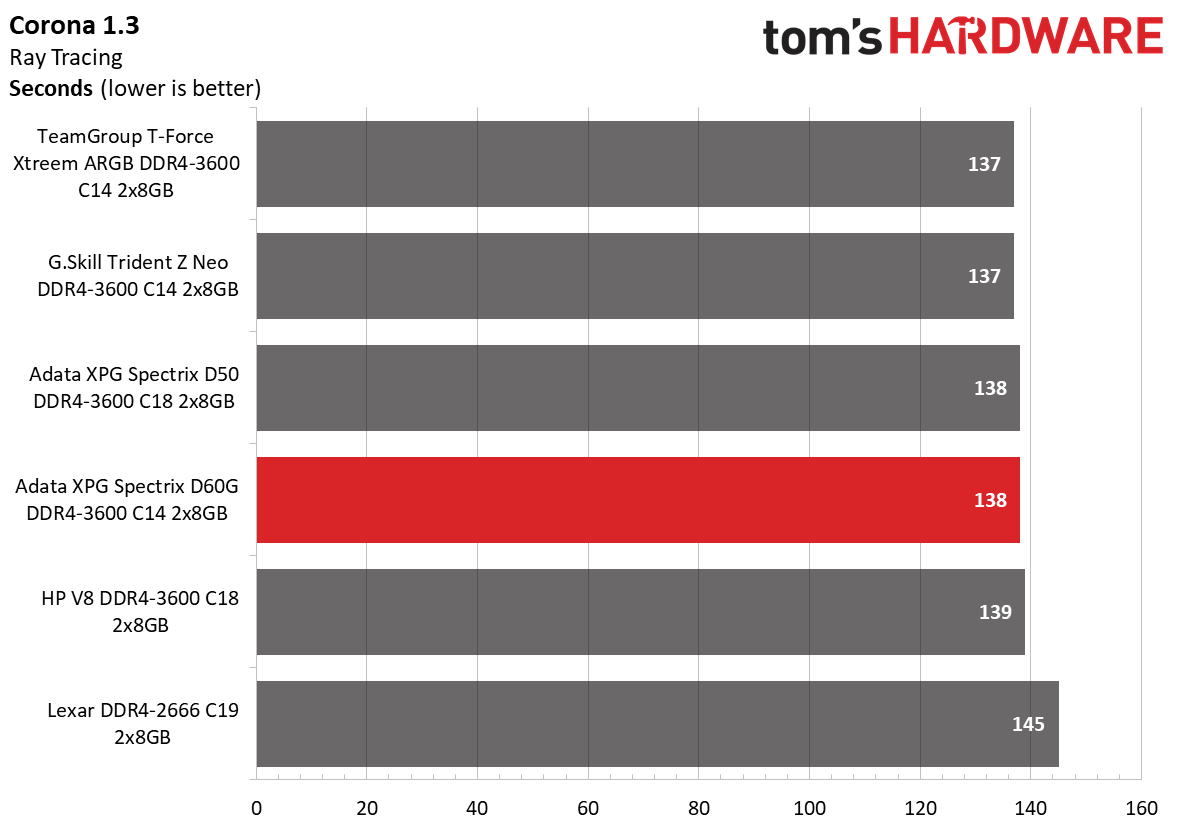
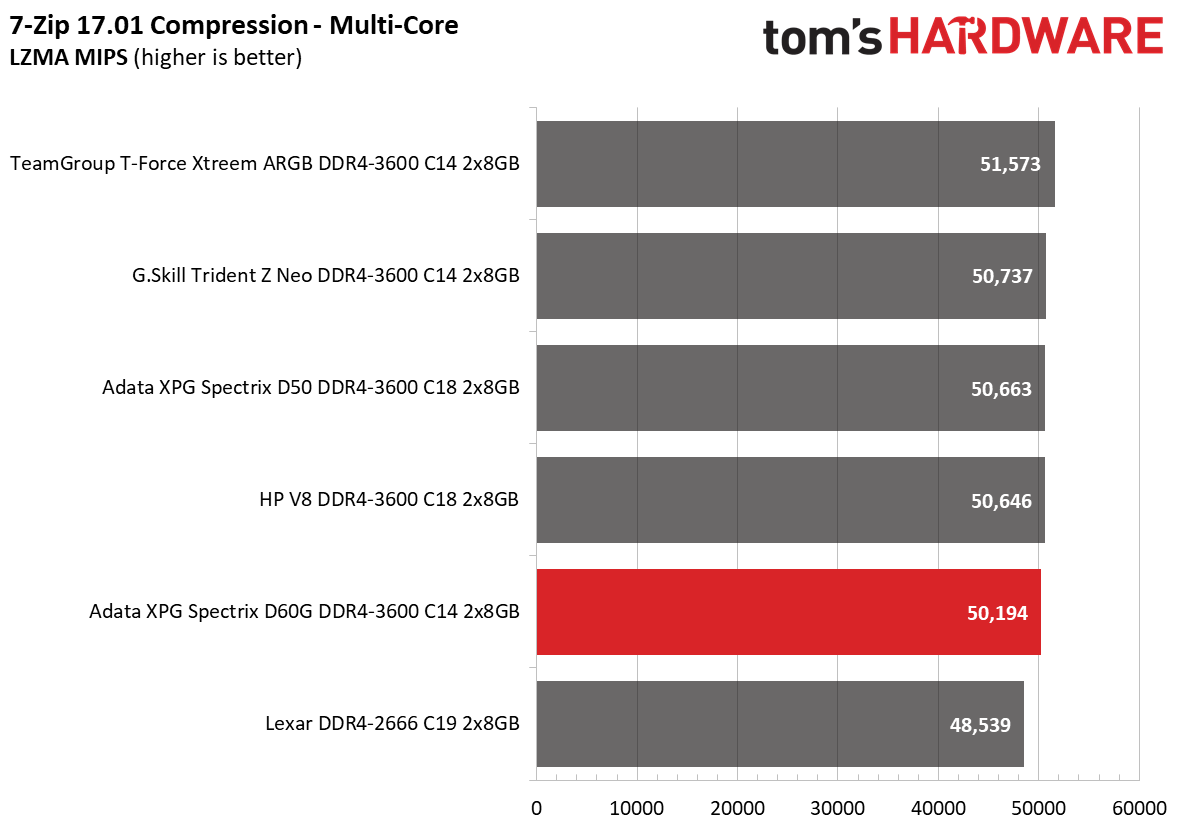
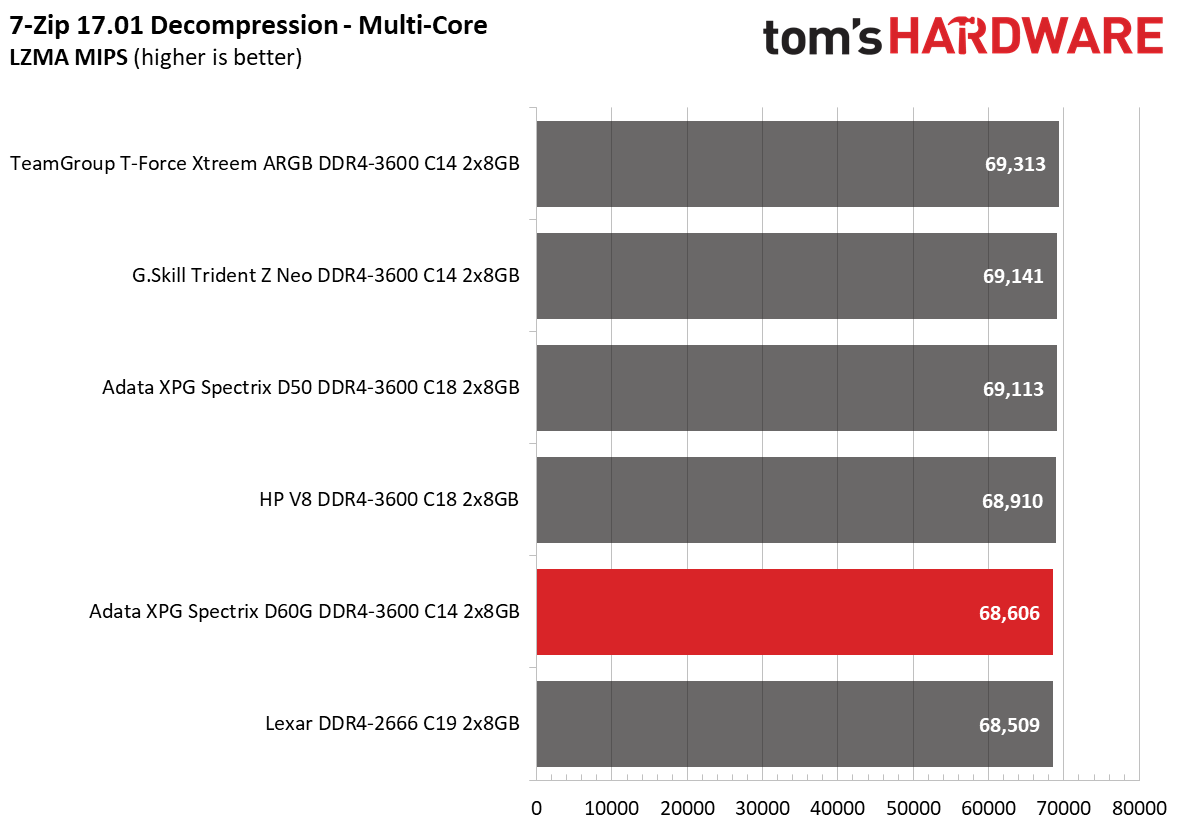
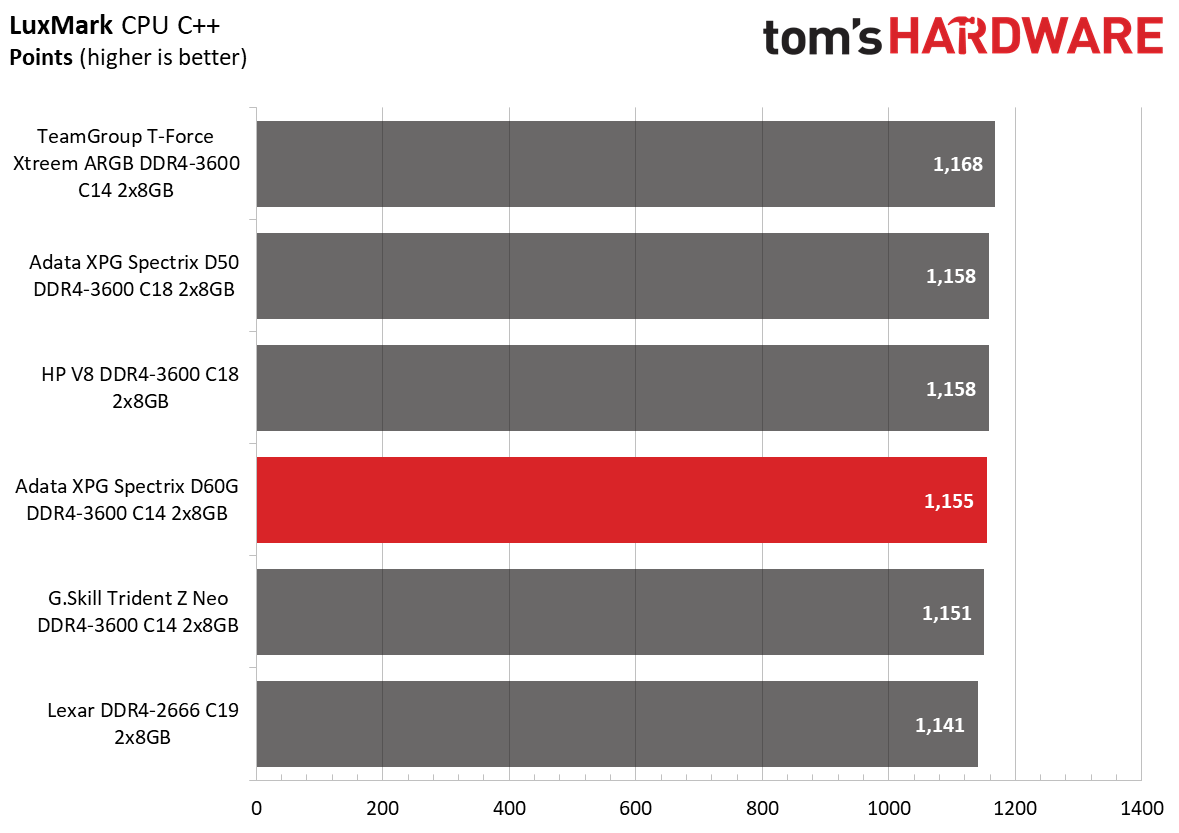
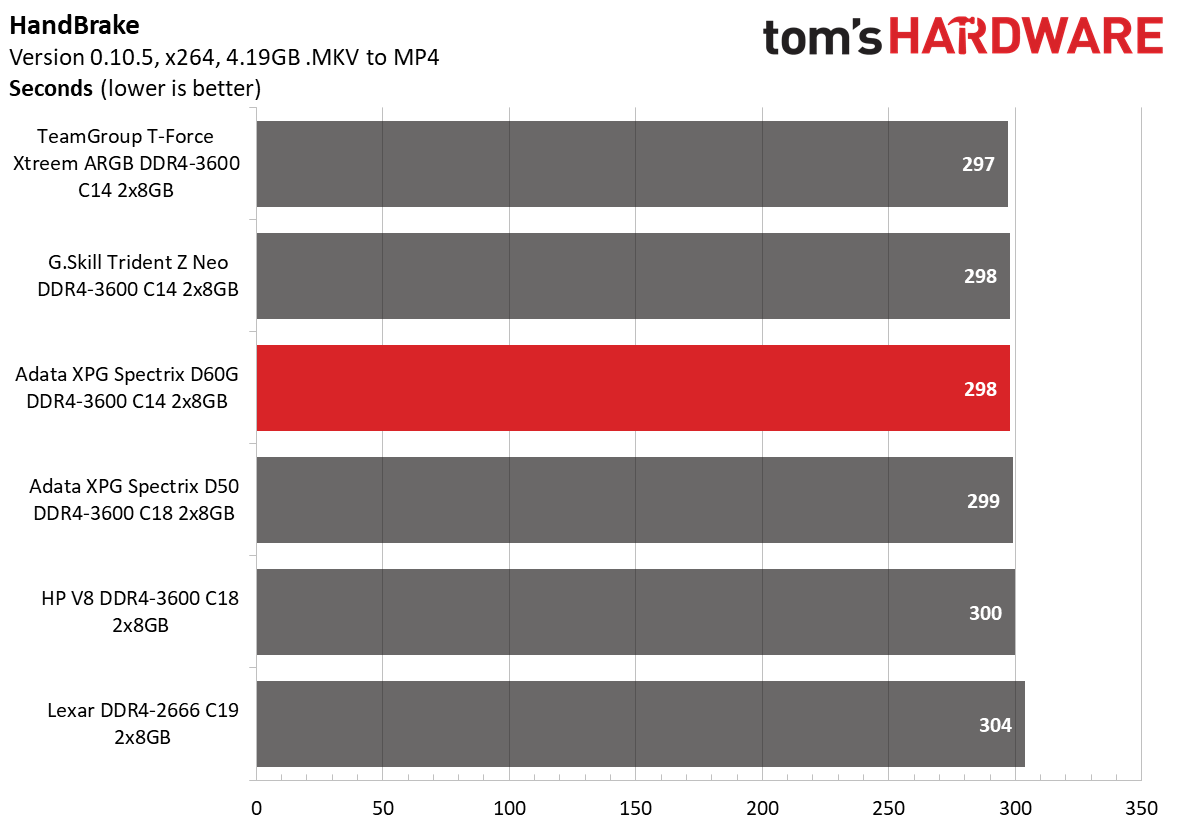
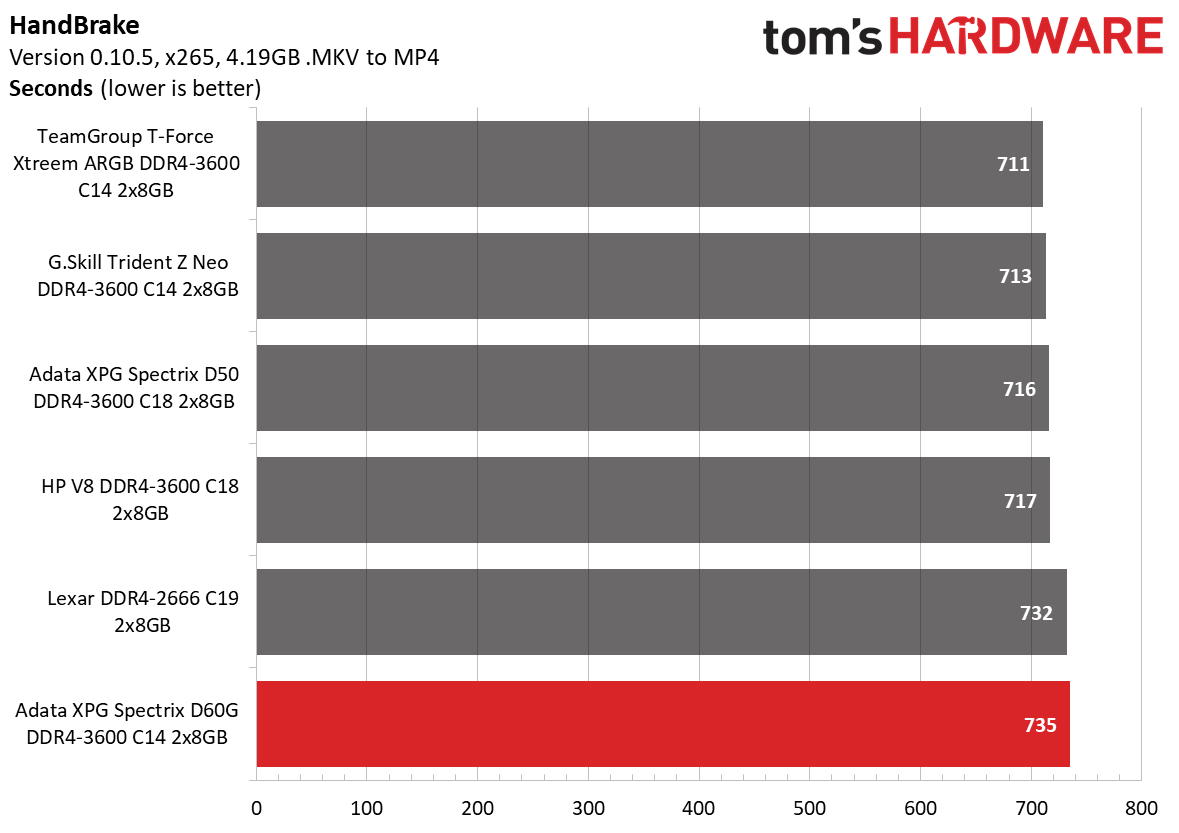
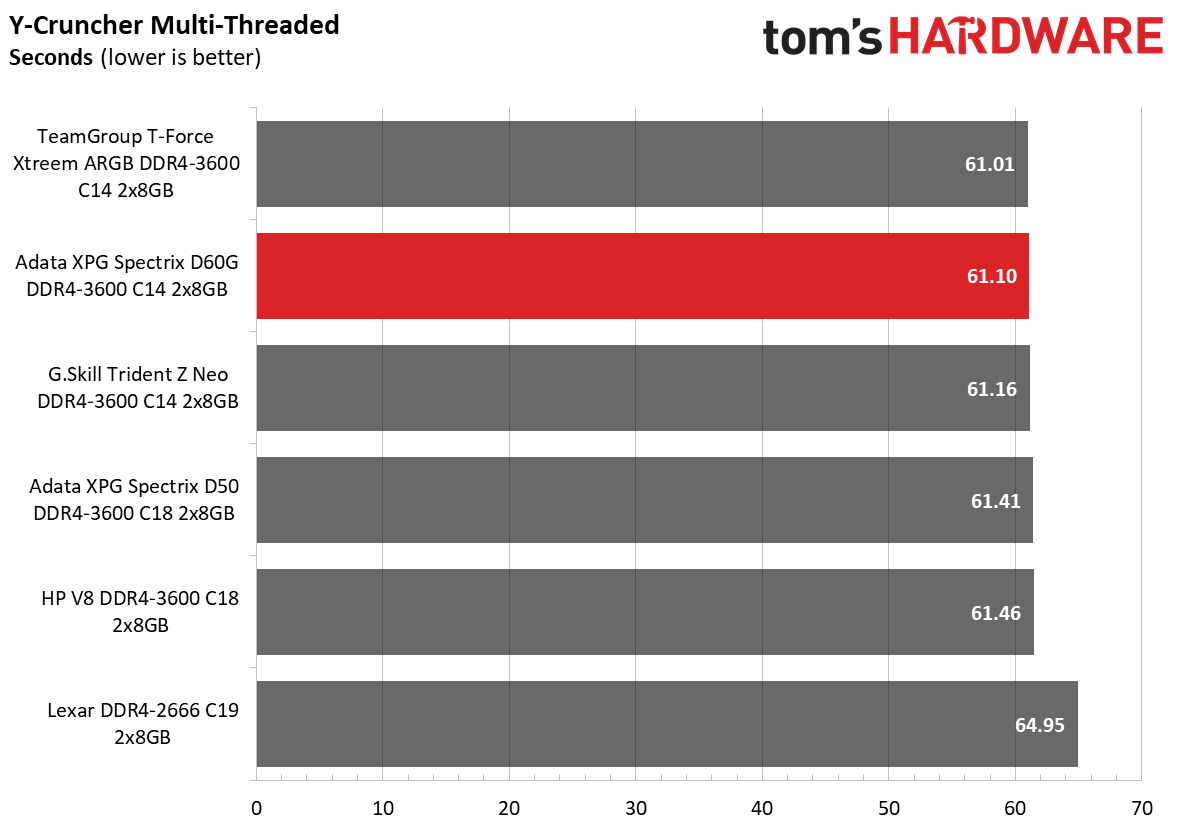
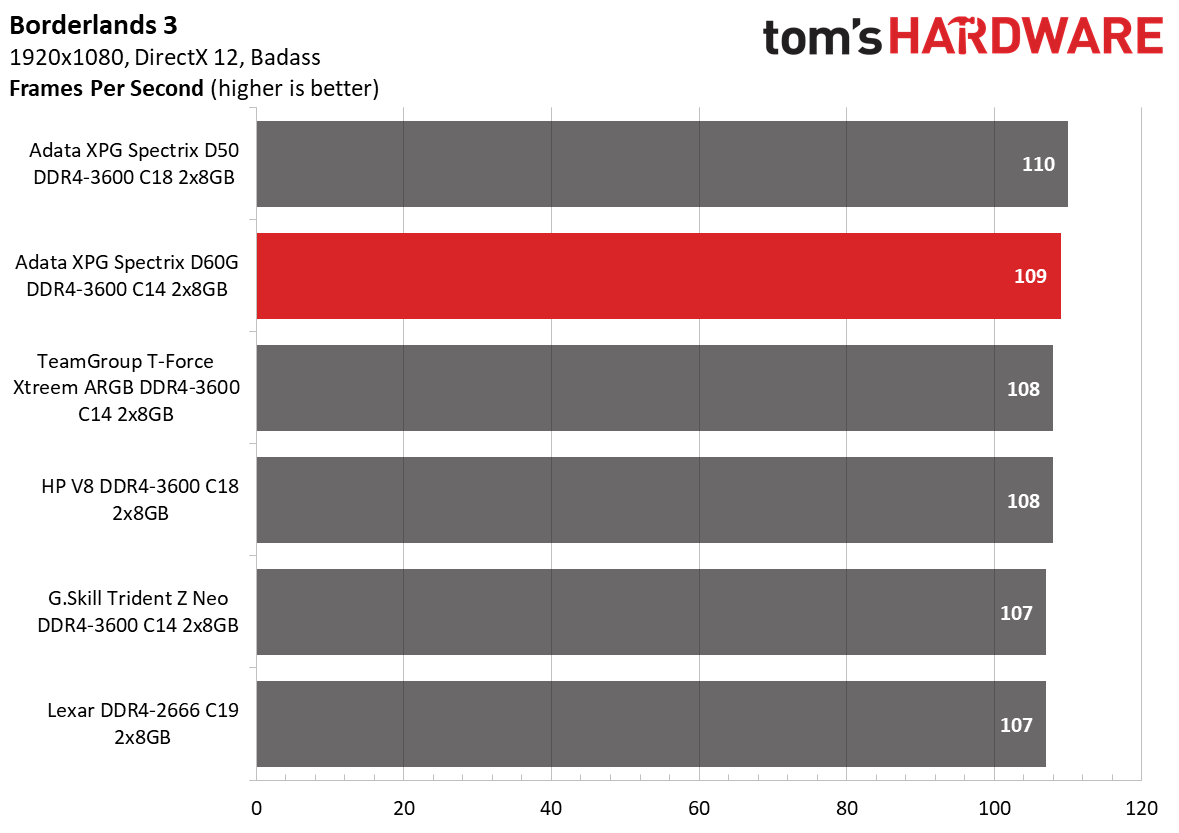
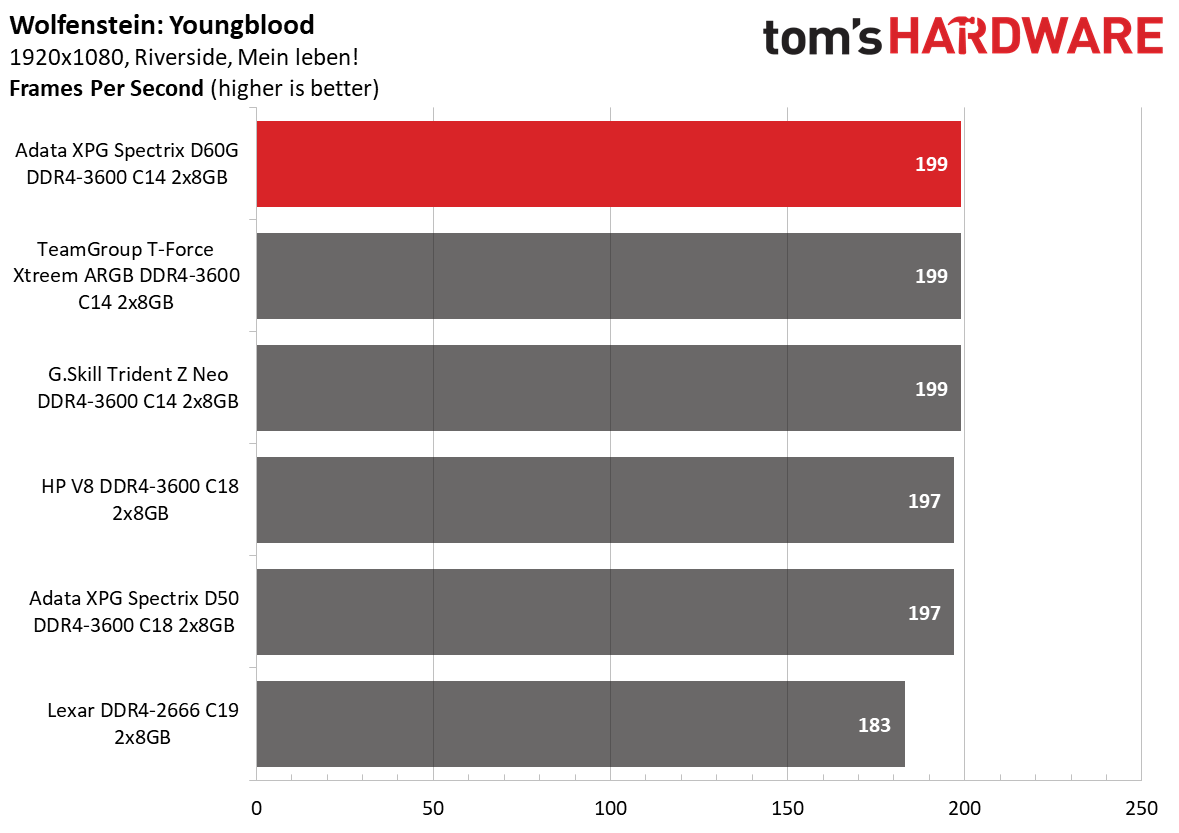
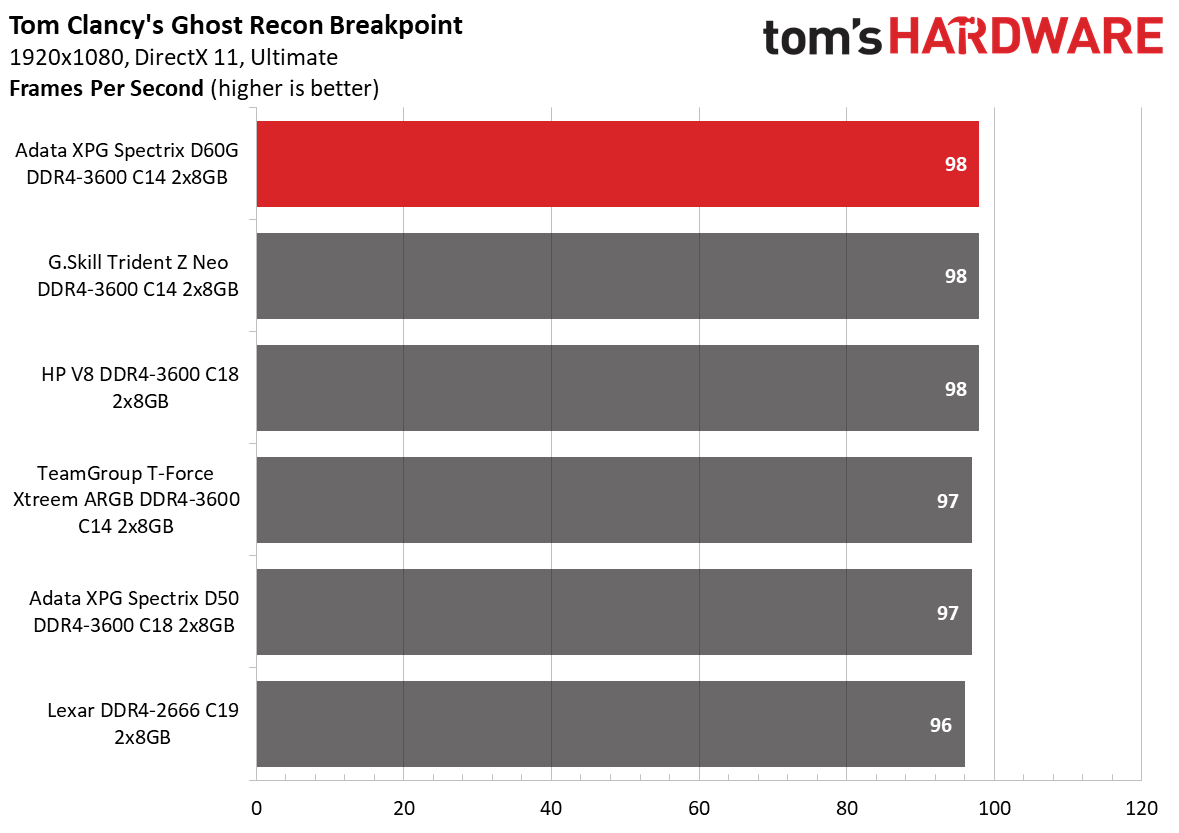
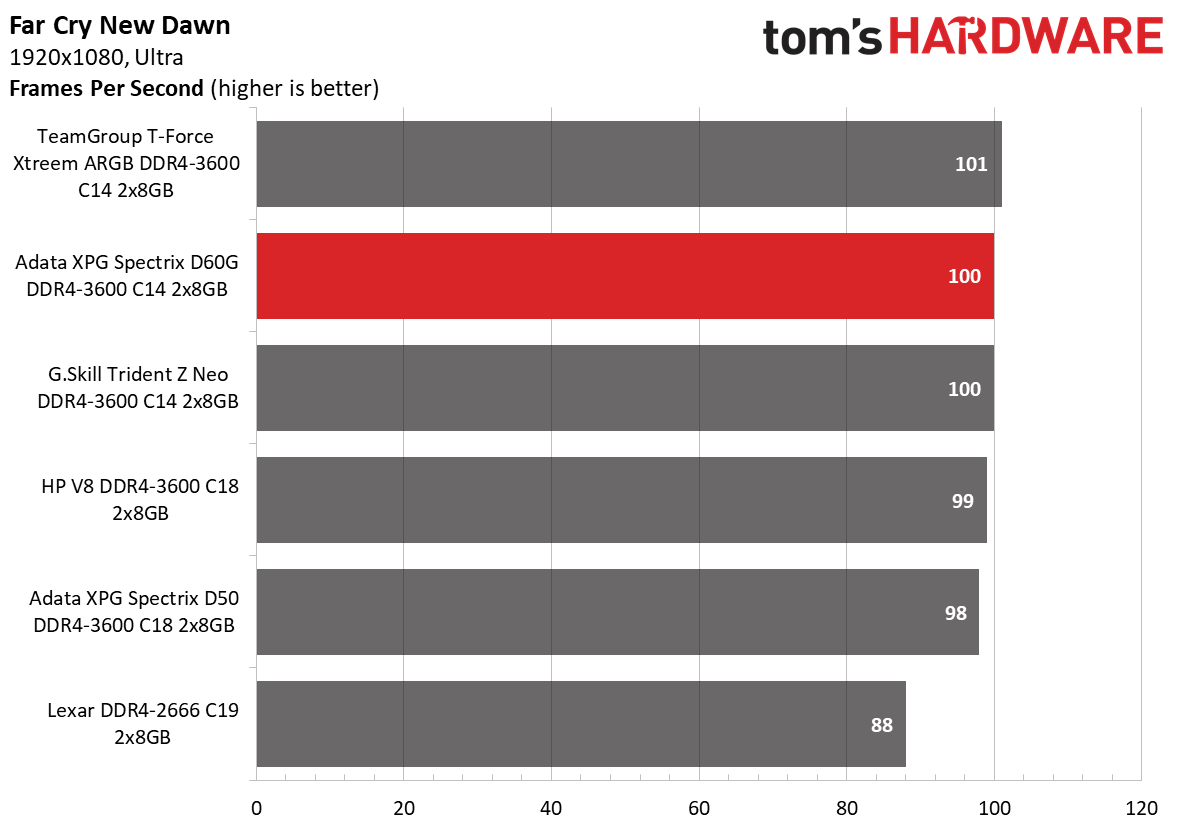
The Spectrix D60G dropped the ball on our AMD platform, though, falling to fourth place overall in the CPU benchmarks. To our surprise, the Spectrix D50 DDR4-3600 C18 edged out the Spectrix D60G by a very small margin. When it comes to gaming, the Spectrix D60G is still the top memory kit on the AMD gaming charts.
Overclocking and Latency Tuning
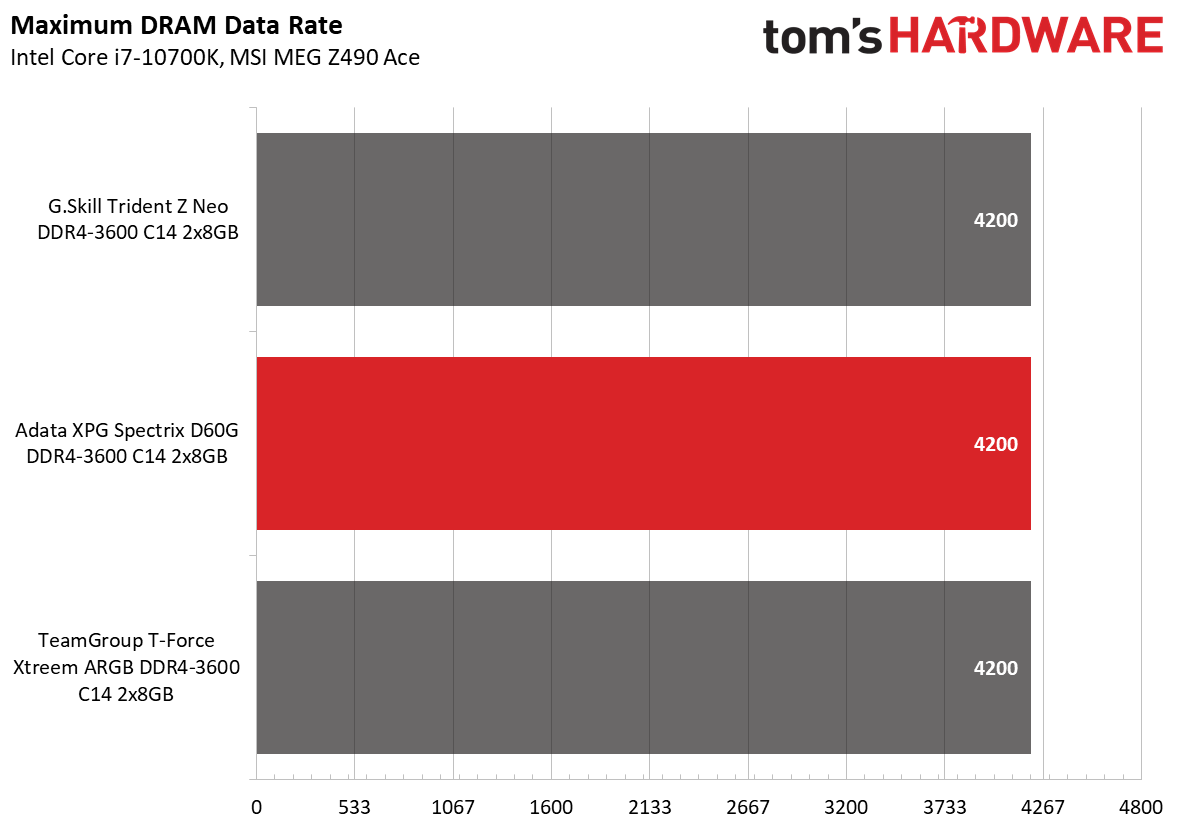
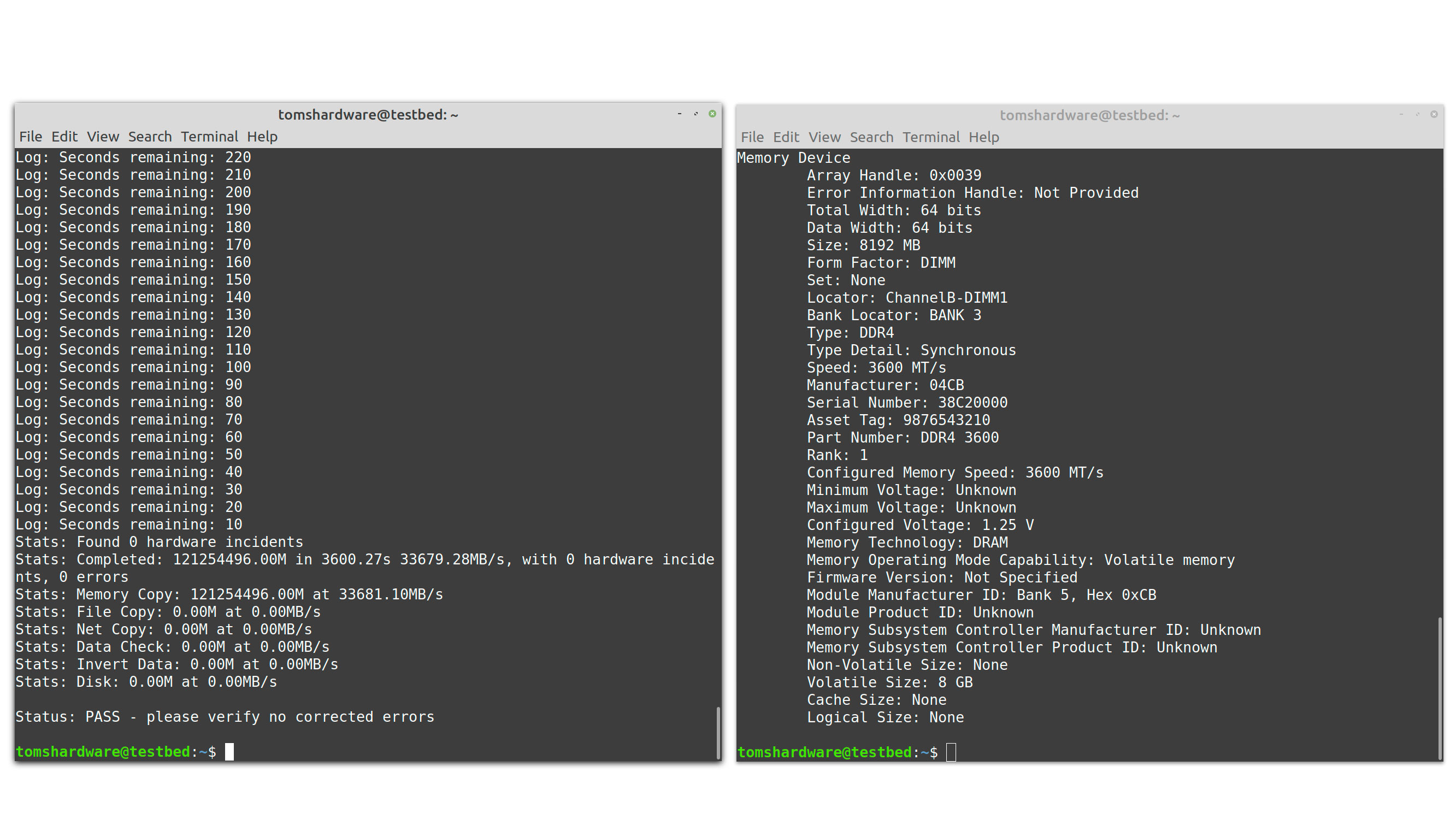
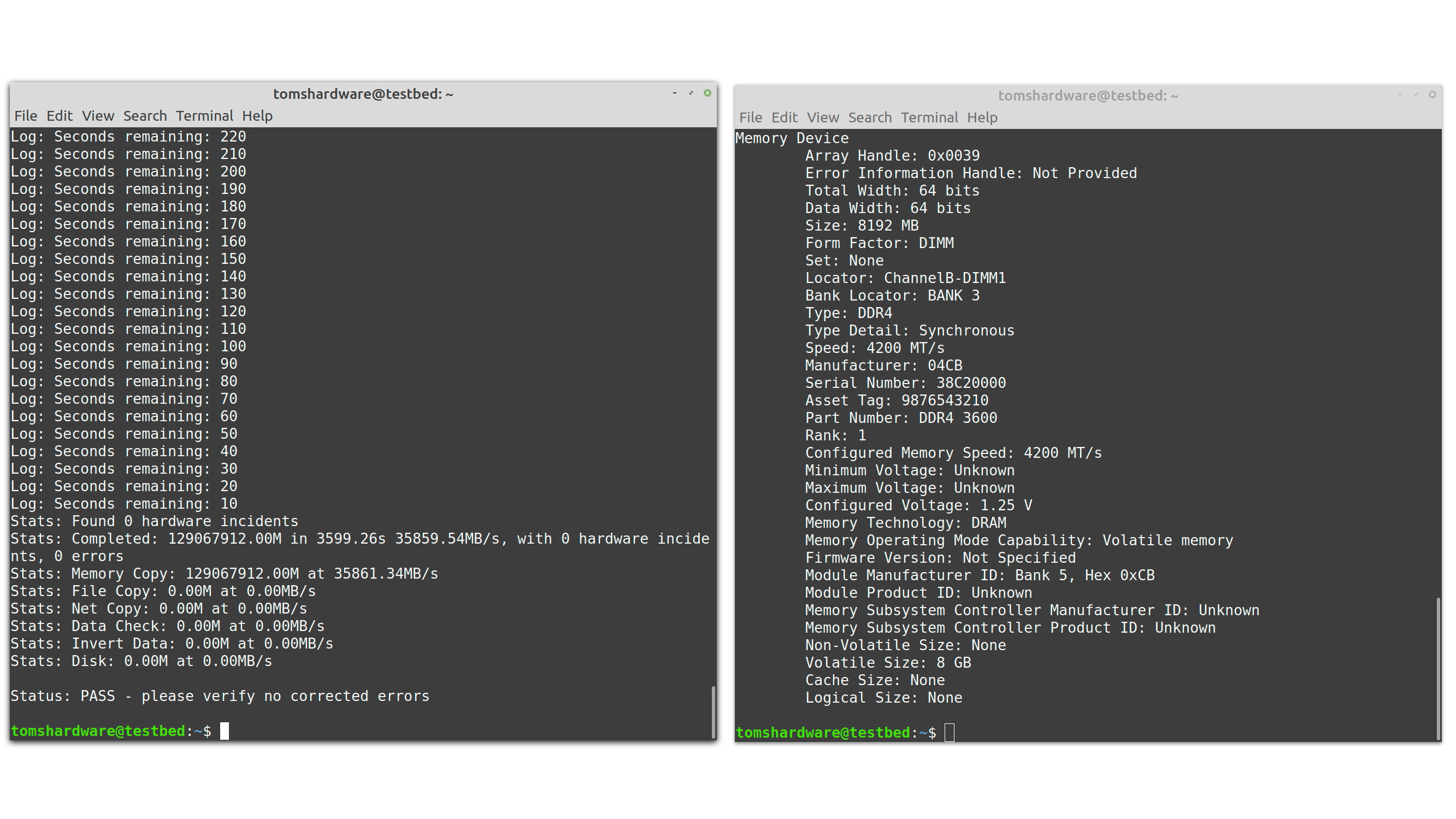
The Spectrix D60G hit DDR4-4200 without much issue on 1.45V. However, that frequency was only stable at a CAS Latency of 20, as opposed to the G.Skill and TeamGroup memory kits, that tolerated a CAS Latency of 19.
Lowest Stable Timings
| Memory Kit | DDR4-3600 (1.46V) | DDR4-4200 (1.45V) |
|---|---|---|
| G.Skill Trident Z Neo DDR4-3600 C14 | 13-16-16-36 (2T) | 19-19-19-39 (2T) |
| Adata XPG Spectrix D60G DDR4-3600 C14 | 13-15-15-35 (2T) | 20-19-19-39 (2T) |
| TeamGroup T-Force Xtreem ARGB DDR4-3600 C14 | 13-14-14-35 (2T) | 19-19-19-39 (2T) |
A slight increase of 0.01V did wonders on the Spectrix D60G and helped further optimize the timings for DDR4-3600. We could drop the CAS Latency from 14 to 13, although we had to keep the tRCD, tRP and tRAS timings at 15-15-35 to maintain stability.
Bottom Line
The XPG Spectrix D60G DDR4-3600 C14 memory kit proved to be the best performer in our gaming tests on both Intel and AMD platforms. The memory kit is no slouch in terms of general performance either, although the results show that the memory kit performs slightly better on Intel than on AMD. If you like tweaking, you'll be happy to know that Adata left some some overclocking headroom for you to play with.
You don't need to break the bank to pick up the Spectrix D60G. The memory kit currently sells for $169.99 at various U.S. retailers and plays in the same price range as the other competing DDR4-3600 C14 memory kits.

Zhiye Liu is a news editor, memory reviewer, and SSD tester at Tom’s Hardware. Although he loves everything that’s hardware, he has a soft spot for CPUs, GPUs, and RAM.
-
Makaveli Needs 1.45V to run at DDR4-3600 C14 shouldn't really be in the con column.Reply
As there are no sticks at DDR4-3600 C14 that run voltage below 1.45 on the market. -
BarftheMog I am currently using this ram from Adata and I am thoroughly impressed. Unlike the testers in the article, I was easily able to get my 4x8GB / 32gb 3600mhz ram stable at cl 13 14 14 14 34. I haven't bothered much OC the clock speeds honestly as I am easily running the memory at CL 14 14 14 14 34 with no added voltage or anything, simply using my MSI x570 Ace preset "Memory Try It !" setting where you can find a long list of auto OC and/or auto timing OC settings to try with very little effort (that is as long as the settings you choose do boot upon restart). I haven't ever had any issues running it at these settings and I have seen the majority of folks attempting to run 4000mhz ram at 1:1 fclk at 2000mhz having issues going above 1900mhz fclk with some having trouble even at 1900mhz and 3600 cl14 is plenty fast...so much so that it is unlikely that anyone would notice a difference (especially in real world application/use) between it and anything faster, like 3800 cl16...so why bother? And I could raise the voltage slightly to lower the timings even more if I wanted as I've already proven that stable...but I'd rather run stock voltages with lower timings if possible to hopefully increase the longevity and life of the ram kit I have. I also noticed in their table of "Lowest Stable Timings," every set of RAM listed was supposedly set to command rate of 2T. Surely this is a mistake as all of those would run at 1T stock and shouldn't need to be changed to 2T at those settings for stability... Once again, my 4x8gb 3200mhz d60g memory runs at 1T with timings set to 14 14 14 14 34 with ease and without any additional voltage.Reply
I highly recommend this memory...it's tough to beat at any price and coming in at nearly half the price of some of the kits it beats, why would you not buy it? My Memory Try It; settings pictured
